Top Balance-Building Exercises for Seniors
As we age, maintaining balance and preventing falls becomes increasingly important for overall health and independence. According to the Centers for Disease Control and Prevention, one in four Americans aged 65 and older falls each year, leading to a range of health problems and a loss of independence. However, with the right exercises, older adults can improve their balance and significantly reduce their risk of falling. In this expanded guide, we will delve into the top exercises designed to improve balance and prevent falls among older adults. Each exercise will be described in detail, including the benefits, how to perform it, and any precautions to take.
The Importance of Balance and Fall-Prevention
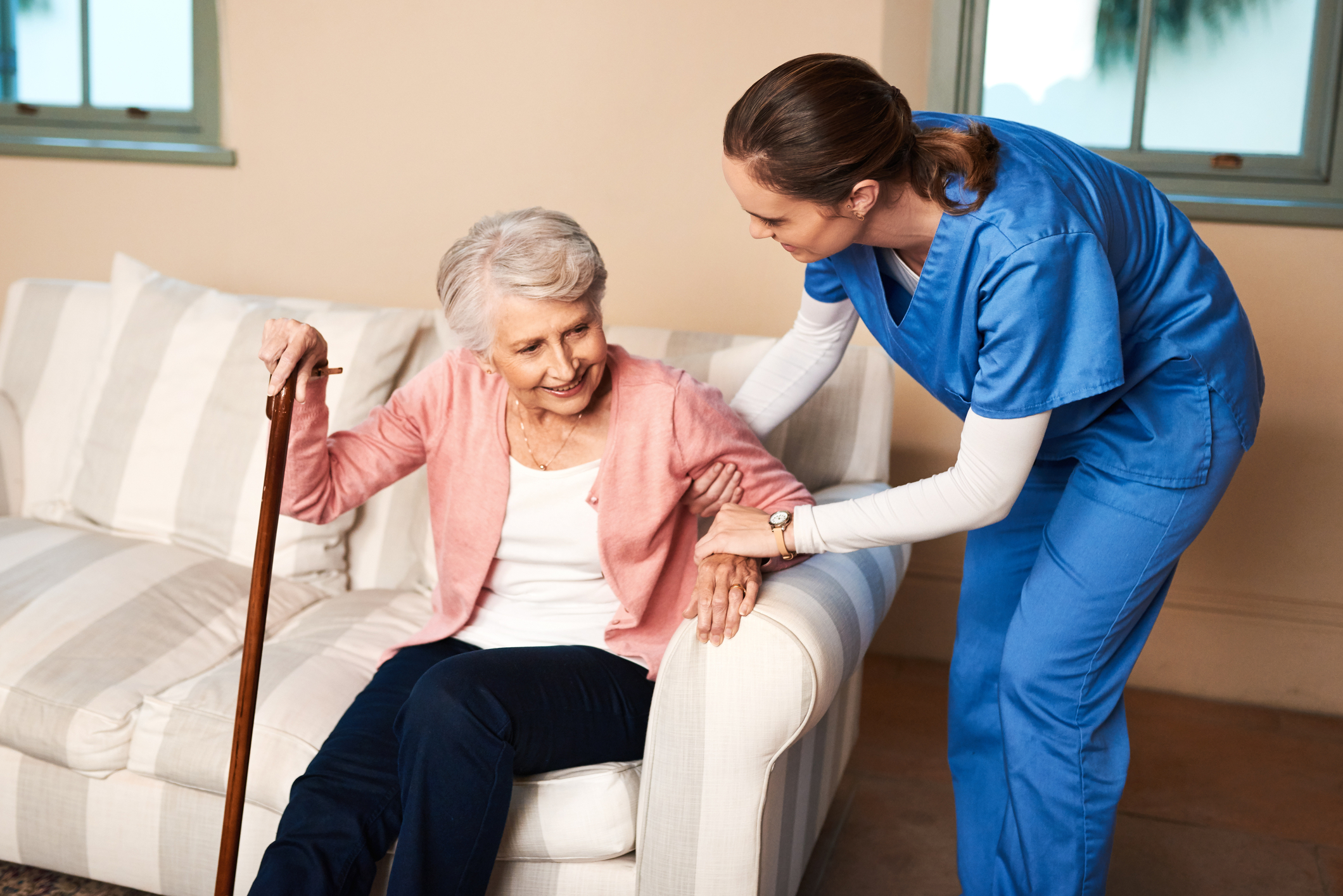
Before we delve into the exercises, it's crucial to understand why balance and fall-prevention are so important. Balance is the ability to maintain the body's center of mass over its base of support. It's a complex process that requires good vision, muscle strength, and coordination. As we age, these systems can become less efficient, leading to a higher risk of falls. Falls are a significant health concern for older adults, often leading to injuries such as hip fractures and head traumas, which can have long-term effects on health and independence.
The Role of Exercise in Balance and Fall-Prevention
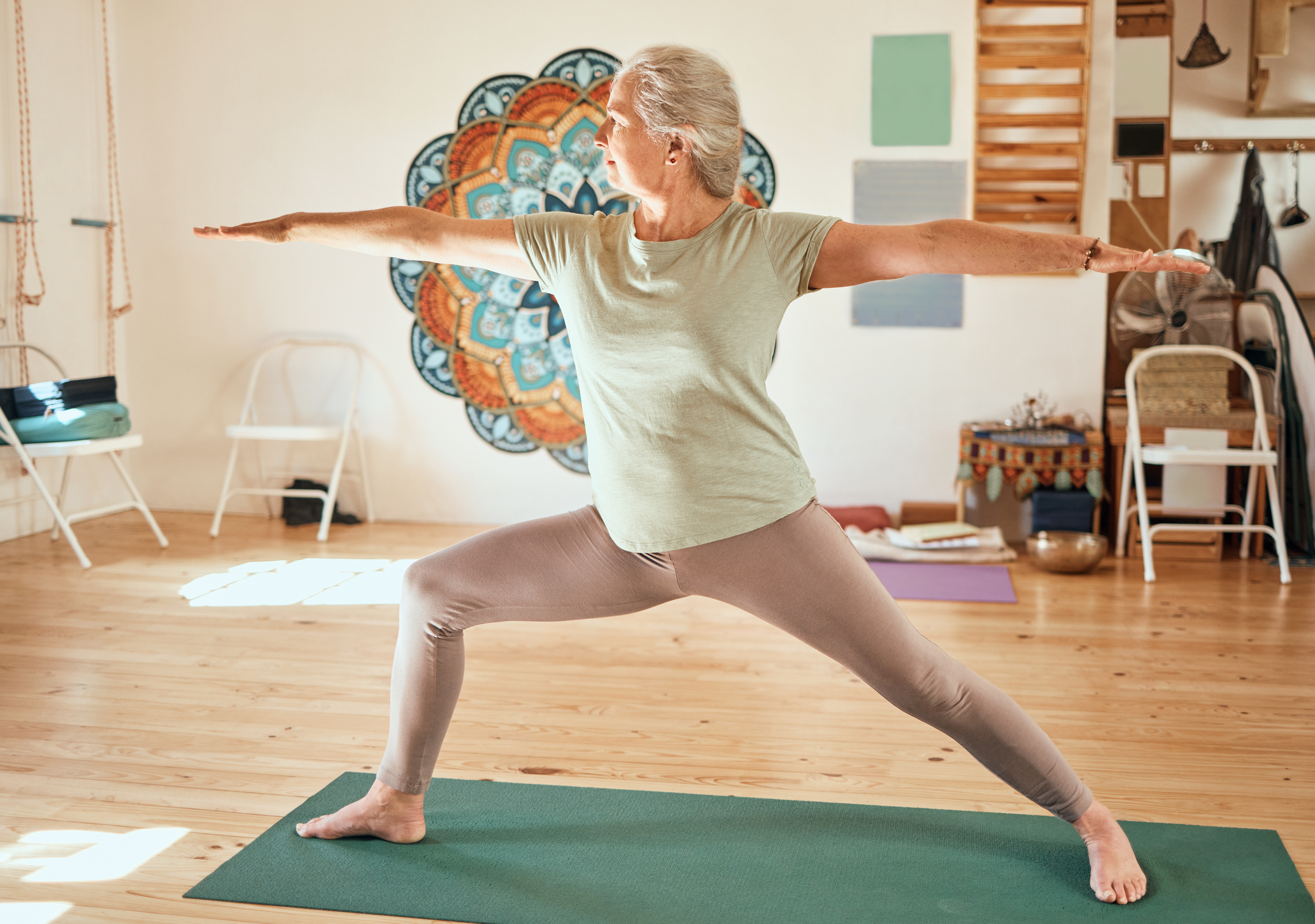
Exercise plays a critical role in improving balance and preventing falls. Regular physical activity strengthens muscles and bones, improves coordination and flexibility, and enhances overall fitness. Moreover, exercise can boost confidence and reduce the fear of falling, which is often a significant barrier to physical activity among older adults. In the following sections, we will explore the top exercises for improving balance and preventing falls.
Exercise #1 - Leg Lifts
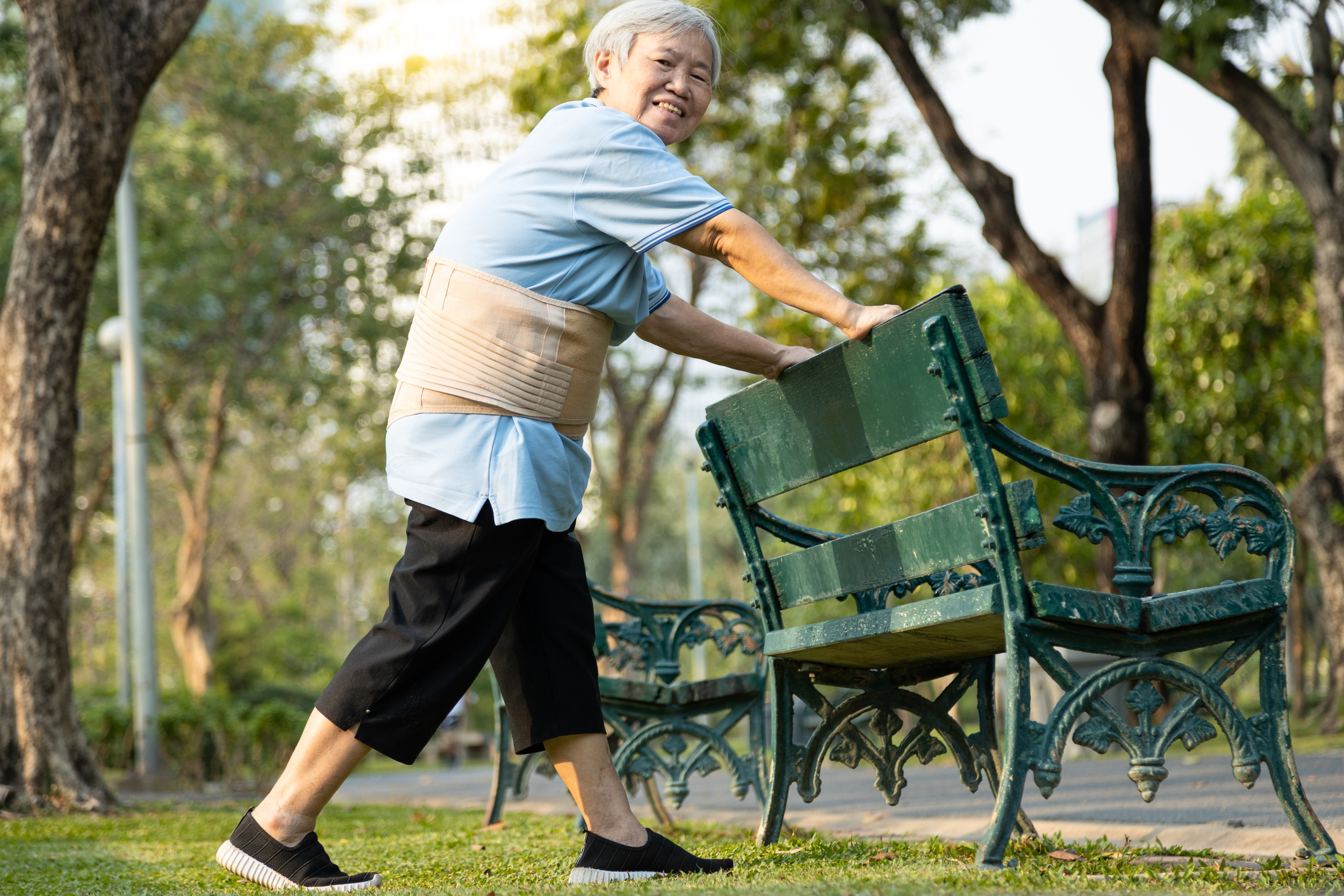
Leg lifts are a simple yet effective exercise for improving balance and lower body strength. Stand behind a chair, holding onto it for support. Slowly lift one leg straight back without bending your knee or pointing your toes. Hold the position for a moment, then lower your leg back down. Repeat with the other leg. This exercise strengthens the lower body, improves balance, and enhances coordination.
Exercise #2 - Heel-To-Toe Walk
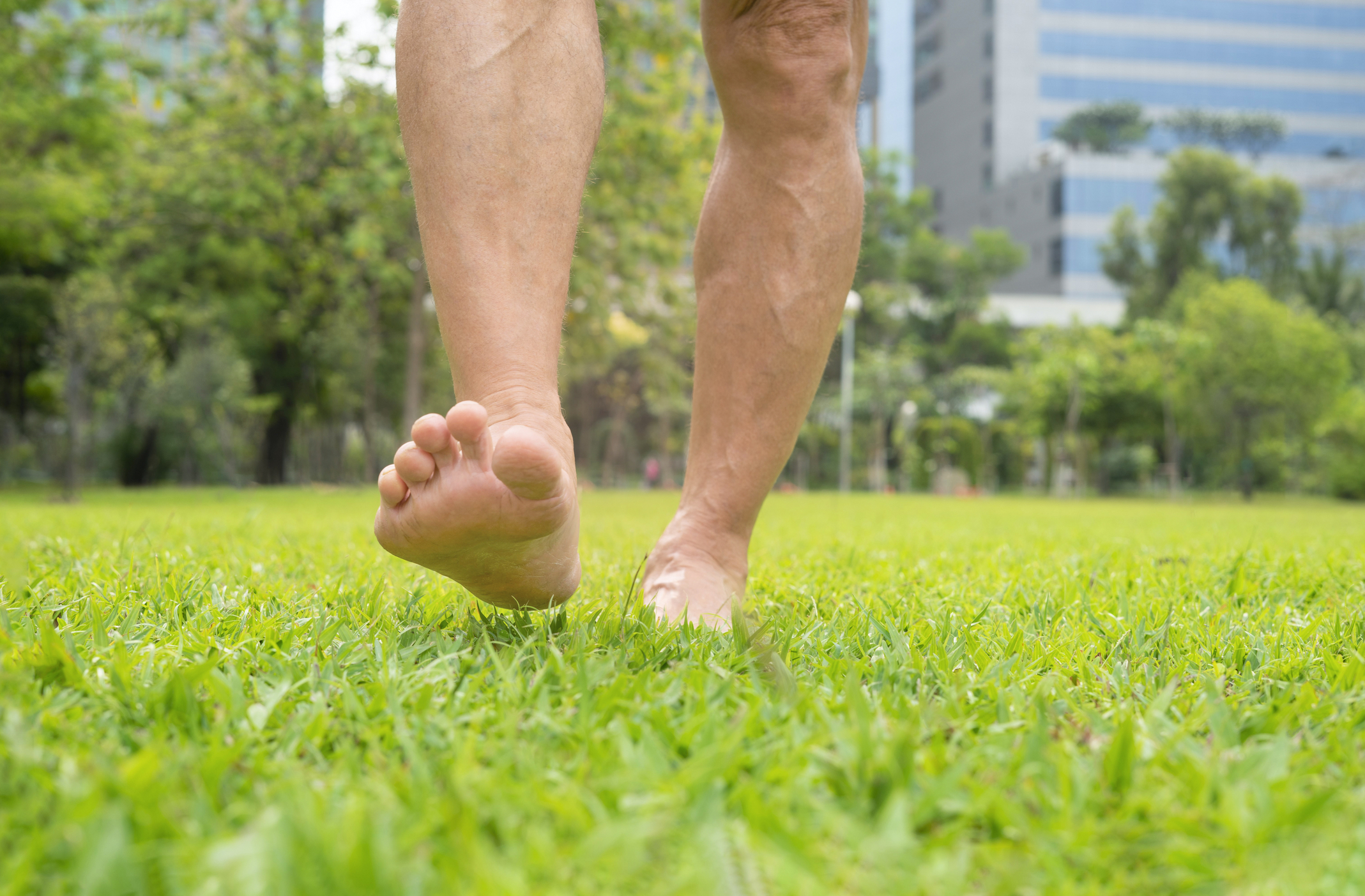
The heel-to-toe walk is a simple exercise that mimics the act of walking on a tightrope. Start by placing one foot in front of the other so that the heel of one foot touches the toes of the other. Walk this way for 20 steps. This exercise improves balance, coordination, and spatial awareness.
Exercise #3 - Chair Squats
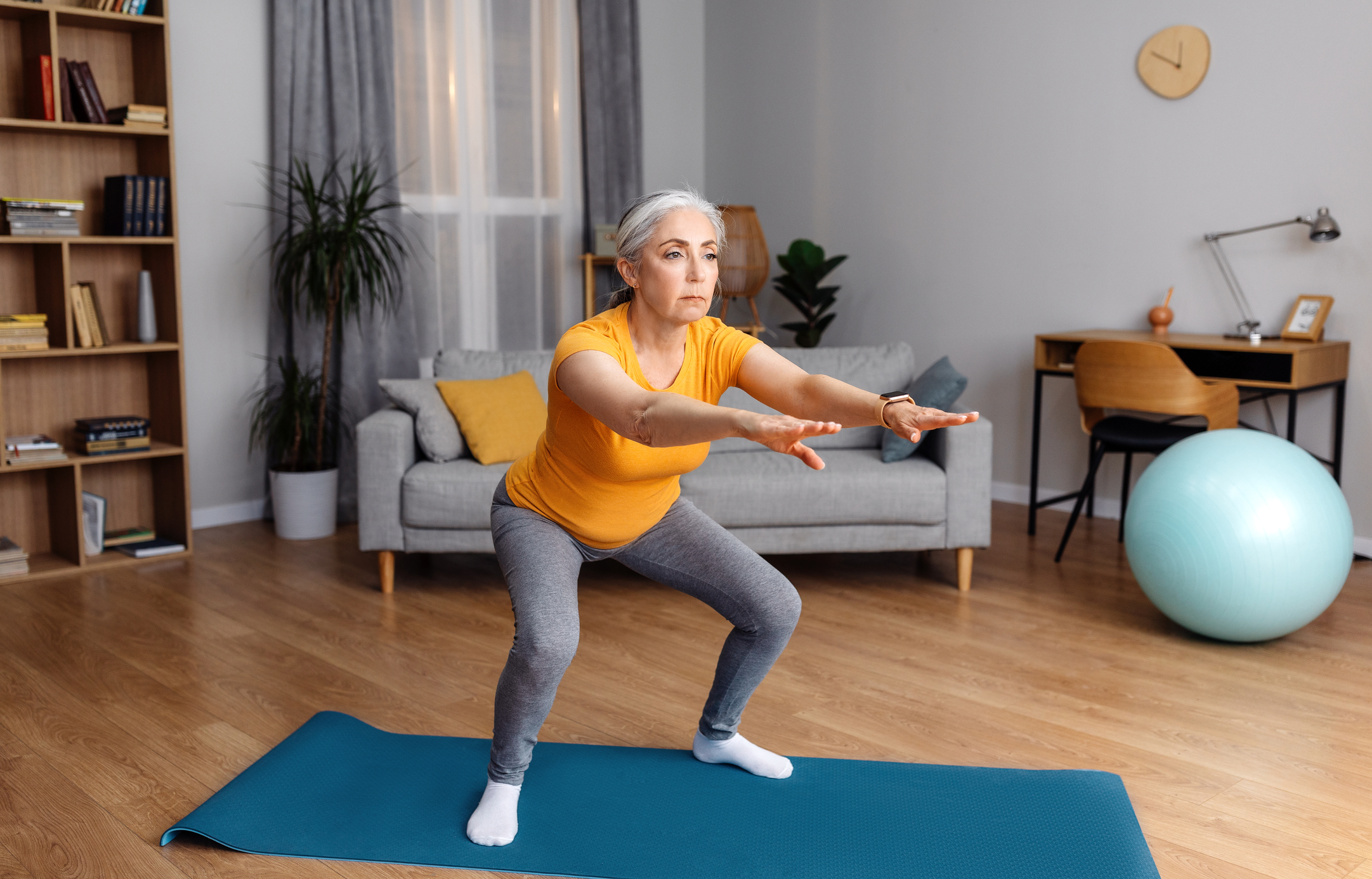
Chair squats are an excellent exercise for improving lower body strength and balance. Start by sitting on a chair with your feet flat on the floor. Lean forward and stand up without using your hands. Then, slowly sit back down. Repeat this 10 times. This exercise strengthens the legs and core, improving balance and reducing the risk of falls.
Exercise #4 - Heel Raises
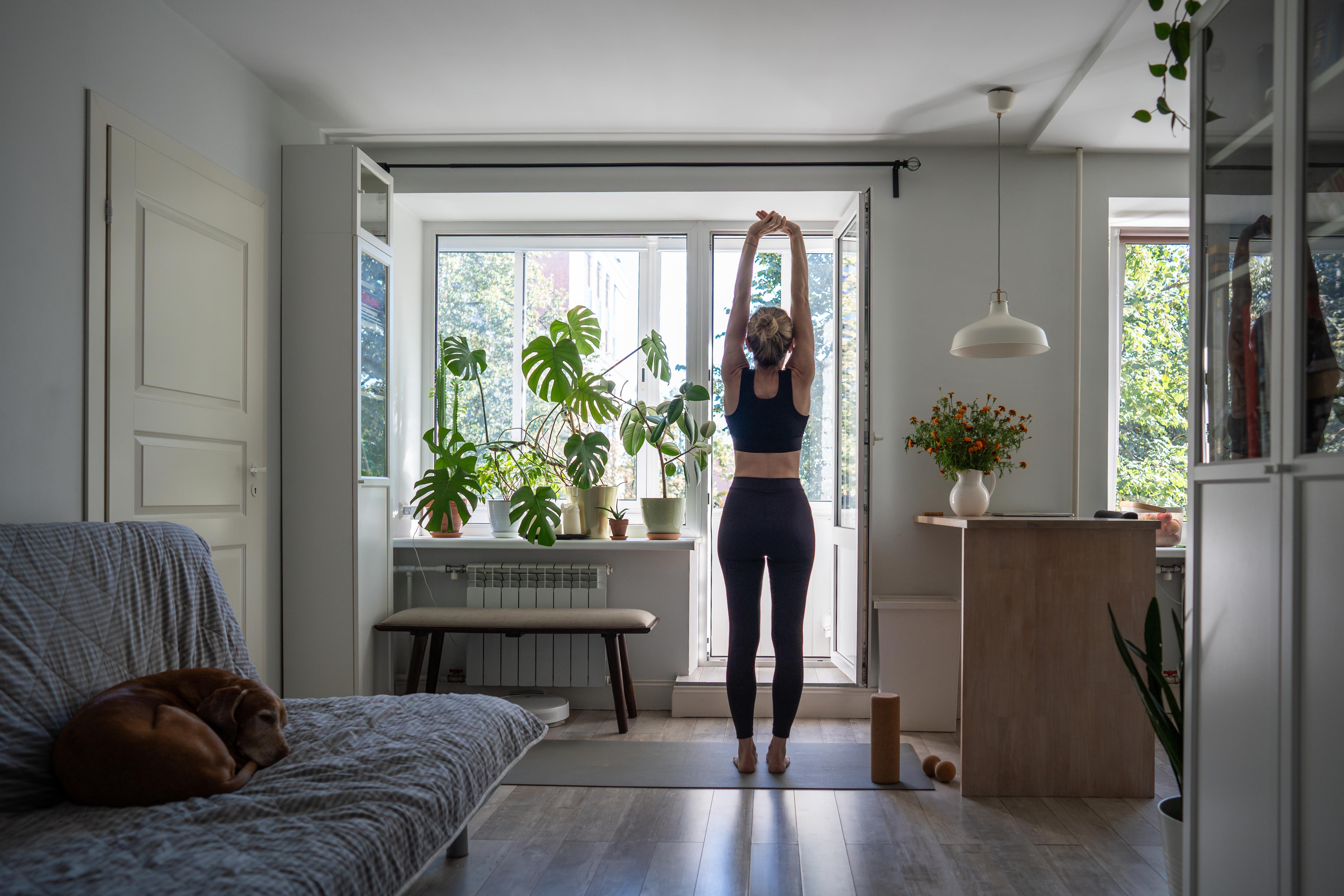
Heel raises are a simple exercise that can significantly improve balance and lower body strength. Stand straight with your feet hip-width apart. Slowly raise your heels off the ground and stand on your toes. Lower your heels back down and repeat. This exercise strengthens the calf muscles, enhancing balance and stability.
Exercise #5 - Wall Push-Ups
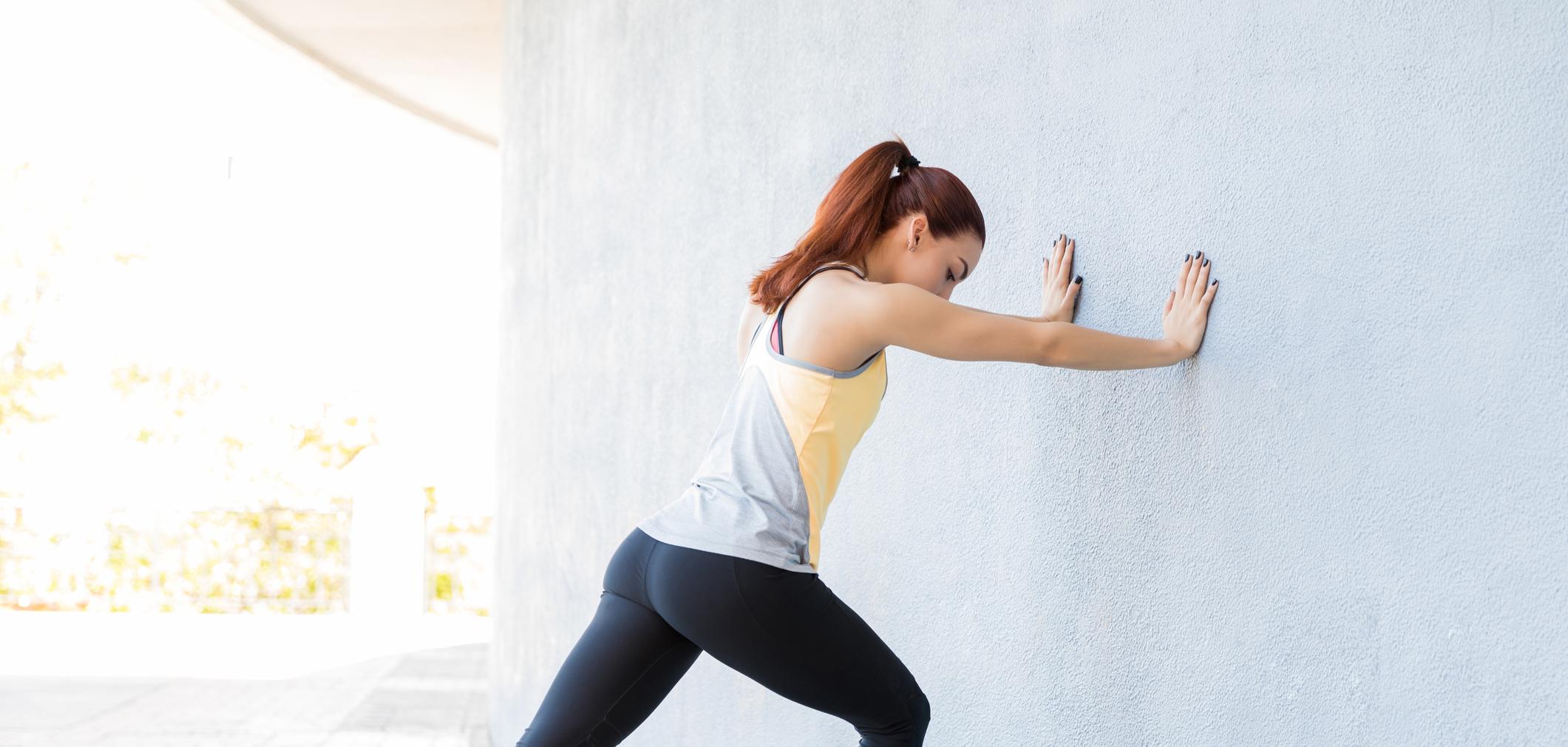
Wall push-ups are a safer alternative to traditional push-ups for older adults. Stand facing a wall with your feet shoulder-width apart. Place your hands on the wall at chest height. Bend your elbows and bring your chest towards the wall. Push back to the starting position. This exercise strengthens the upper body and core, improving balance and stability.
Exercise #6 - Side Leg Raises
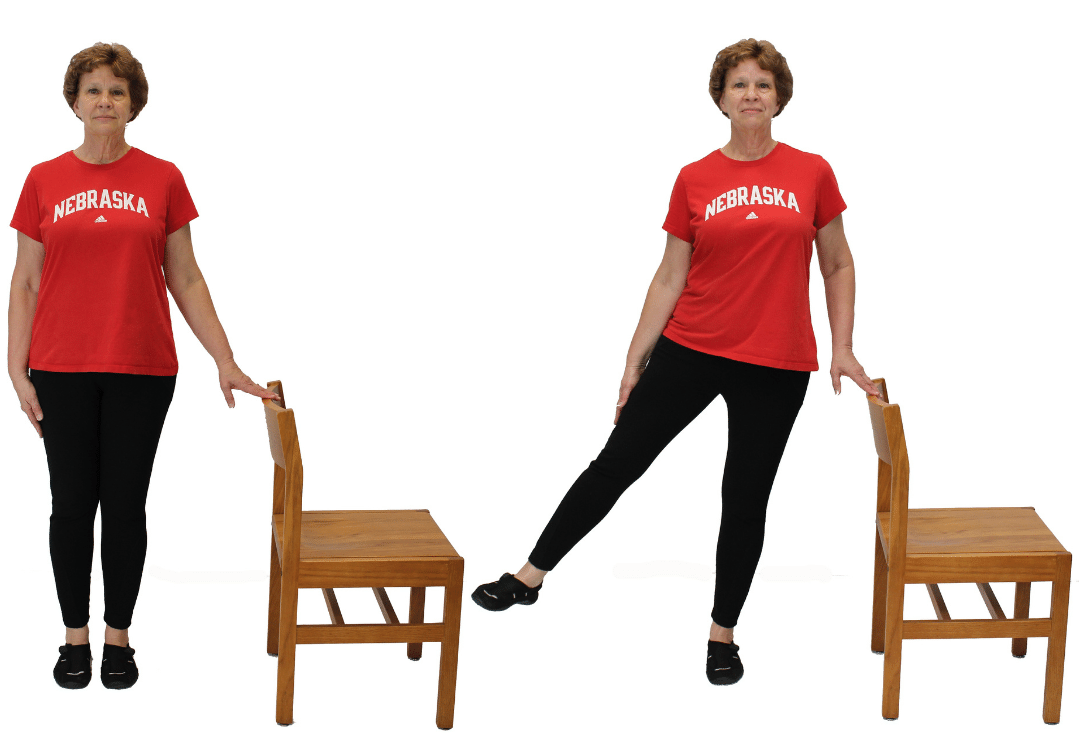
Side leg raises help strengthen the hips, thighs, and lower back, all of which are crucial for balance. Stand behind a chair for support and slowly lift one leg to the side. Keep your back straight and your toes facing forward. Lower your leg and repeat with the other leg.
Exercise #7 - Back Leg Raises
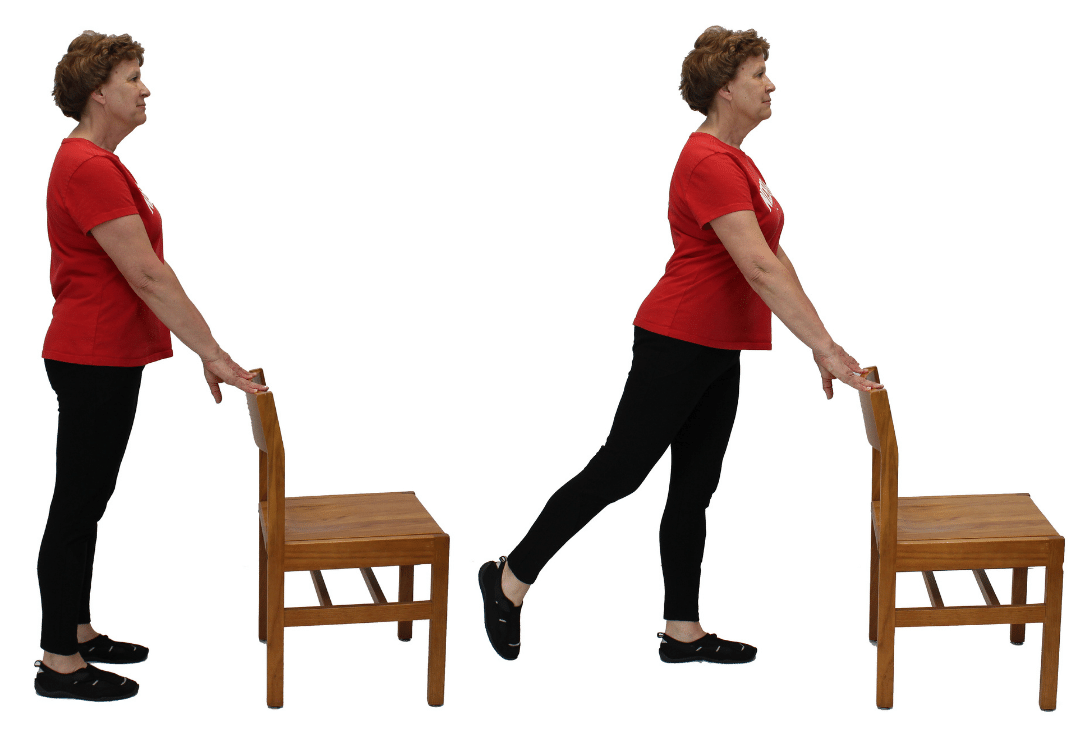
Back leg raises strengthen the lower back and buttocks, improving balance and stability. Stand behind a chair for support and slowly lift one leg straight back without bending your knee. Lower your leg and repeat with the other leg.
Exercise #8 - Single-Leg Stand
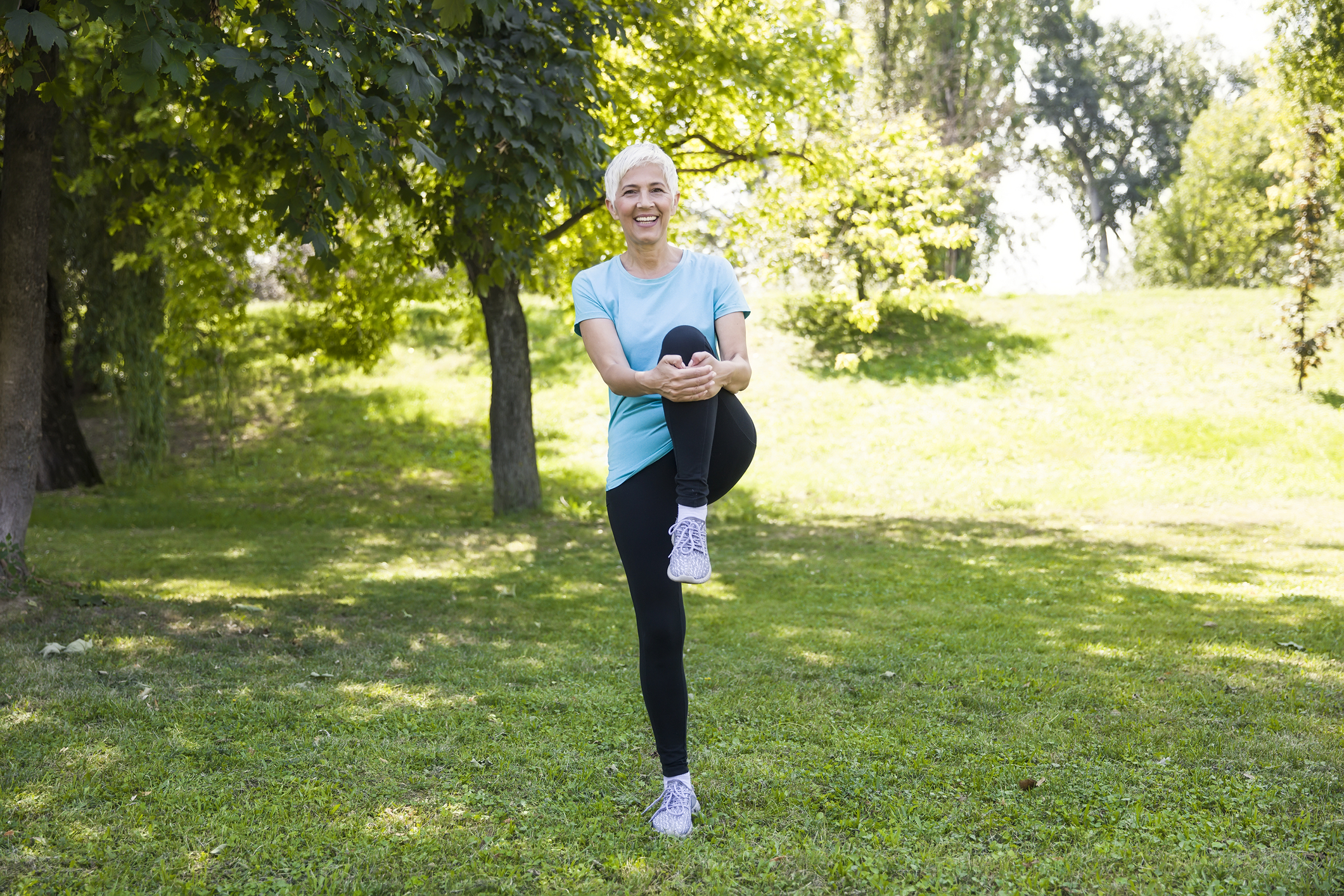
The single-leg stand is a challenging but effective exercise for improving balance and lower body strength. Stand straight and lift one foot off the ground. Hold the position for as long as you can, then switch to the other foot.
Exercise #9 - Tai Chi
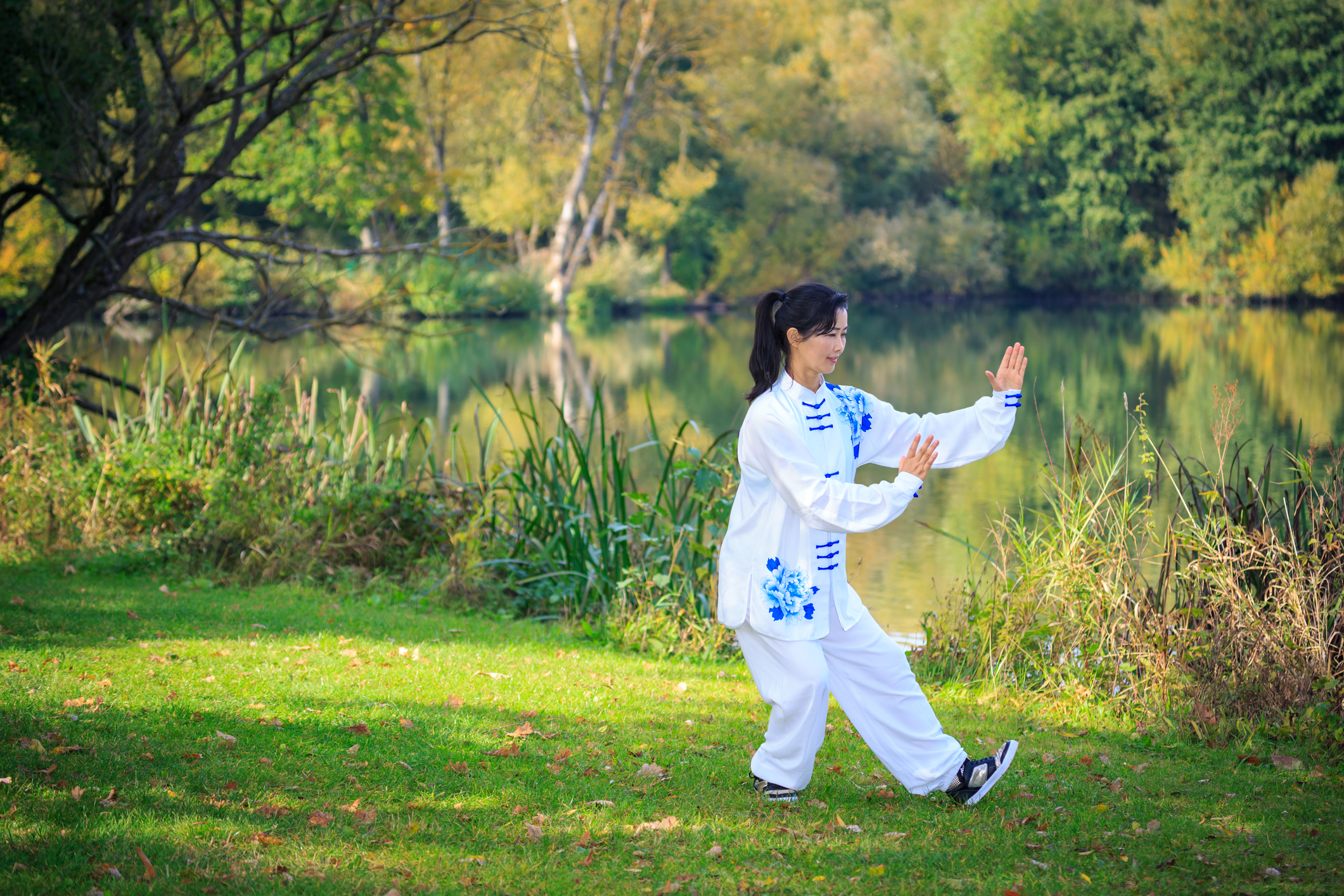
Tai Chi is a form of exercise that involves slow, controlled movements and deep breathing. It's been shown to improve balance, flexibility, and muscle strength. Consider joining a local Tai Chi class or following along with a video at home.
Exercise #10 - Yoga
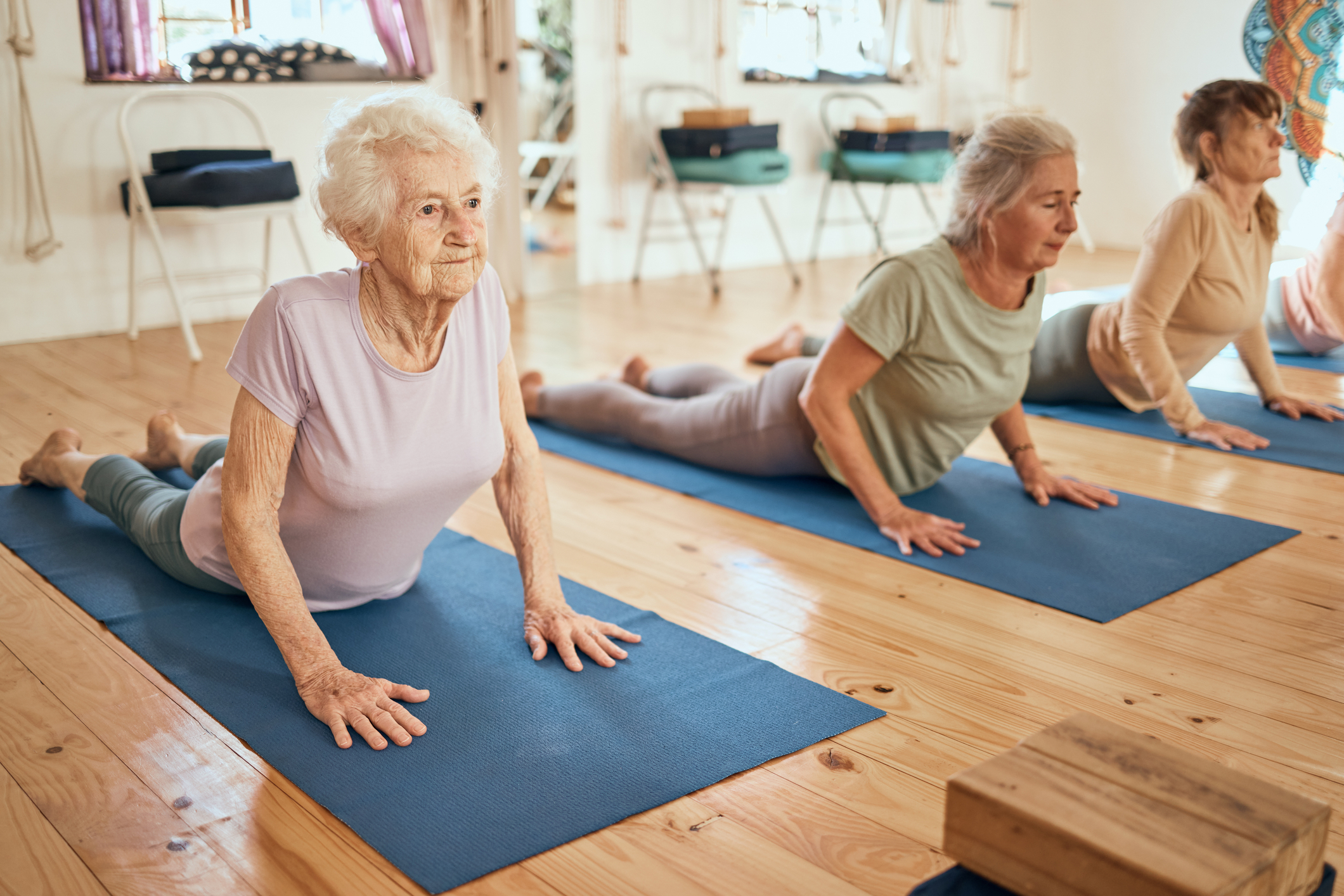
Yoga is another form of exercise that can significantly improve balance and flexibility. It also strengthens the core, which is crucial for maintaining balance. Consider joining a local yoga class or following along with a video at home.
Exercise #11 Walking
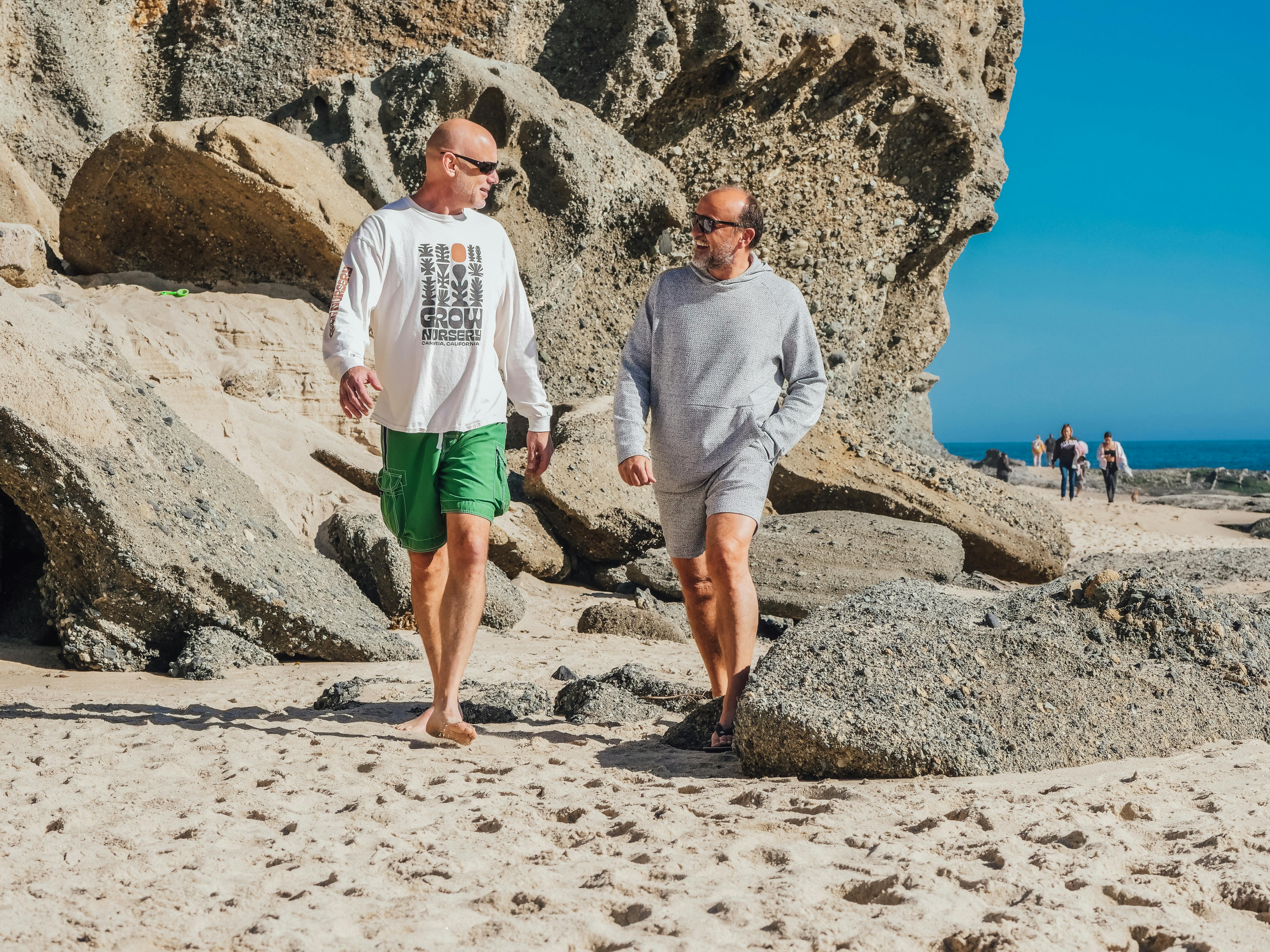
Walking is the most fundamental exercise for fall prevention because it directly trains your dynamic stability—the ability to maintain balance while moving. Regular brisk walking strengthens the muscles that stabilize the hips and knees, while the repetitive motion improves gait symmetry and coordination. Aim for at least 30 minutes of walking most days, focusing on maintaining an upright posture and looking ahead (not down). To increase the balance challenge, practice walking on slightly uneven surfaces like grass or varying the speed. Consistent walking builds endurance and confidence, making you less likely to stumble or trip.
Exercise #12 - Dancing
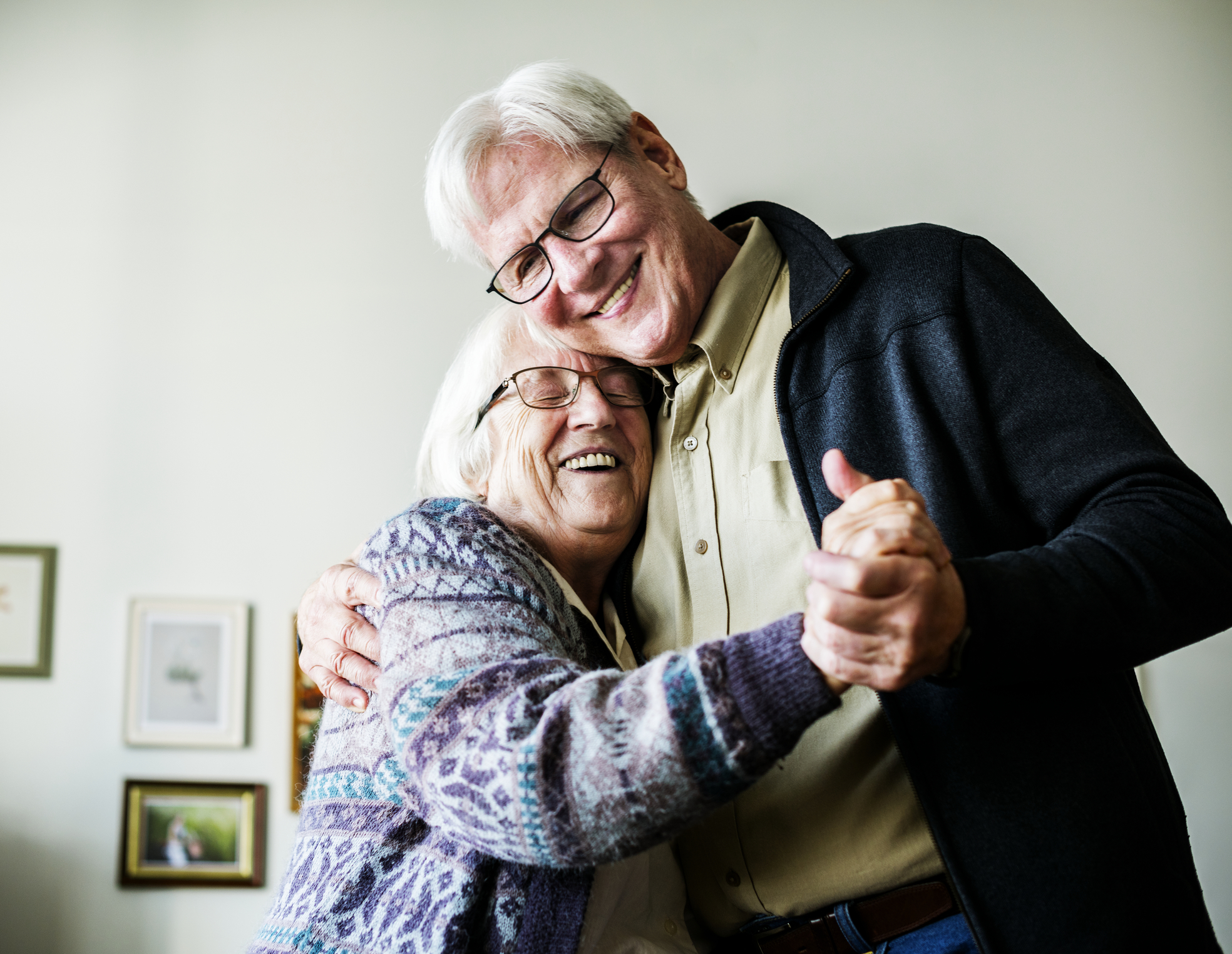
Dancing, particularly forms involving varied directional changes and quick footwork, is an exceptional, low-impact exercise for preventing falls. It simultaneously challenges your cognitive ability and directional balance. Unlike simple forward walking, dancing requires fast-paced decision-making (following steps), spatial awareness (navigating a room), and rapid adjustment of your center of gravity. This combination significantly improves reaction time and the ability to regain balance quickly after a misstep. Look for low-impact classes like ballroom, line dancing, or Zumba Gold for a fun, engaging way to enhance whole-body coordination.
Exercise #13 - Swimming
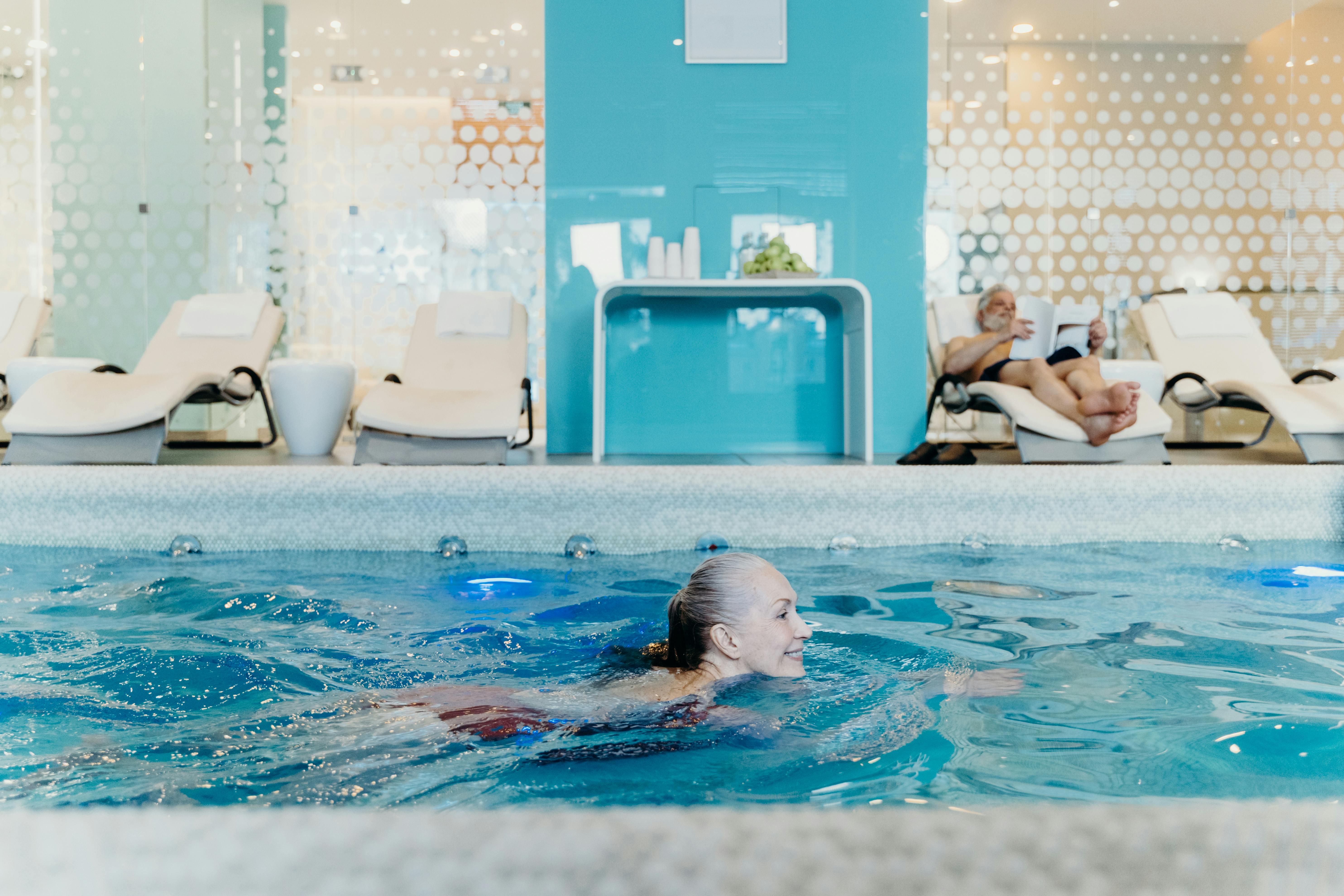
Swimming, or simply walking in water, is an ideal exercise for older adults because the buoyancy reduces joint strain while providing constant gentle resistance. The water acts as a low-impact resistance and balance environment, forcing your core muscles to stabilize the torso against the water's movement. This naturally improves posture and muscle strength without the risk of falling. Water aerobics or treading water are excellent choices. By strengthening the core and upper back, swimming supports the structural alignment necessary for maintaining upright balance on dry land.
Exercise #14 - Cycling
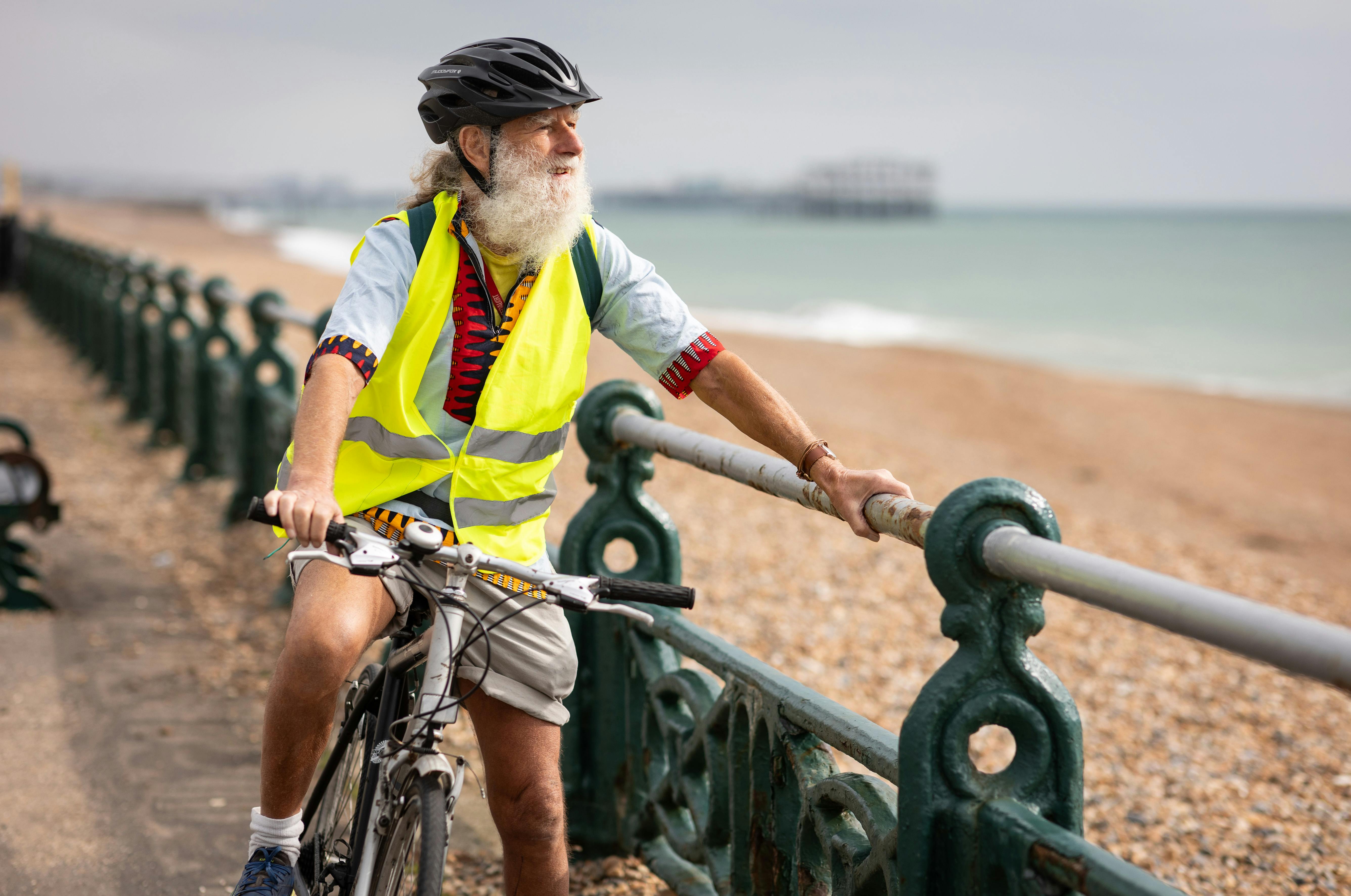
Cycling, whether on a stationary or two-wheeled bicycle, is primarily a non-weight-bearing activity that builds essential lower body power and endurance. Strong leg muscles are crucial for correcting balance errors and recovering from a trip. Cycling also improves the neuromuscular rhythm between your legs, enhancing coordination. For safety, a stationary bike is highly recommended, as it eliminates the risk of falling while still providing the necessary resistance to strengthen the quadriceps, hamstrings, and calves—muscles vital for rising from a chair and moving with confidence.
Exercise #15 - Strength Training
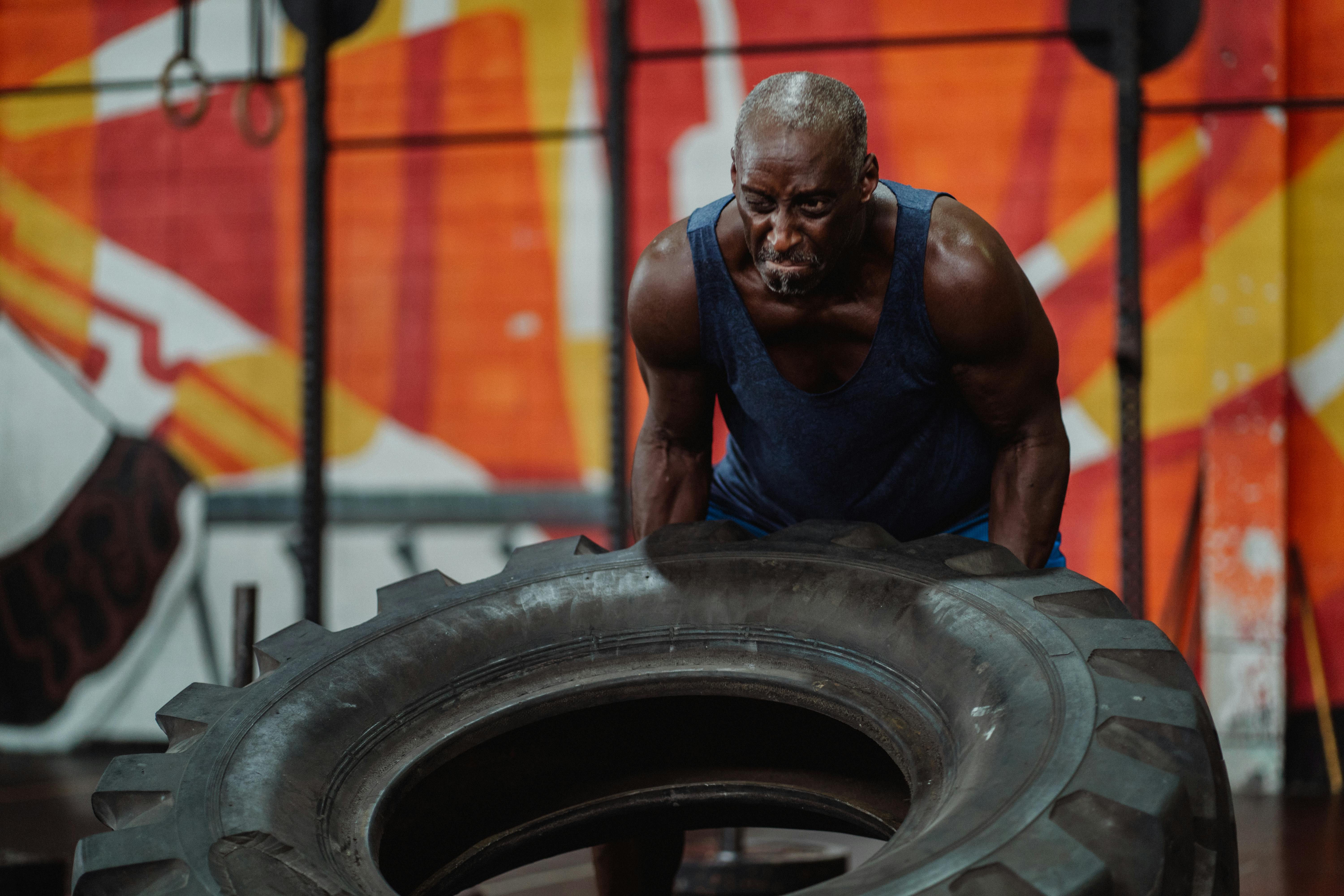
Strength training is arguably the most crucial activity for fall prevention, as muscle weakness is a primary risk factor for falls. Exercises using light weights, resistance bands, or bodyweight (like the Chair Squats you listed) increase muscle mass and bone density. Stronger muscles provide greater support around the joints, improving joint stability and allowing for more forceful and faster reactions to prevent a stumble. Aim to train all major muscle groups (legs, arms, back, and core) at least twice a week.
Exercise #16 - Head Turns (Static Balance Challenge)

This exercise teaches your inner ear (vestibular system) to remain stable while your head moves, a vital skill when looking over your shoulder or turning quickly. Stand near a wall or chair for support, with feet shoulder-width apart. Focus your eyes on a point straight ahead. Slowly turn your head side to side (look left, look right), then up and down (look up, look down). Start slowly, performing 10 repetitions in each direction. Once comfortable, try this without support and gradually increase your speed. This trains your brain to quickly adjust your body's center of gravity when visual input changes, preventing dizziness and stumbles.
Exercise #17 - Clock Reach
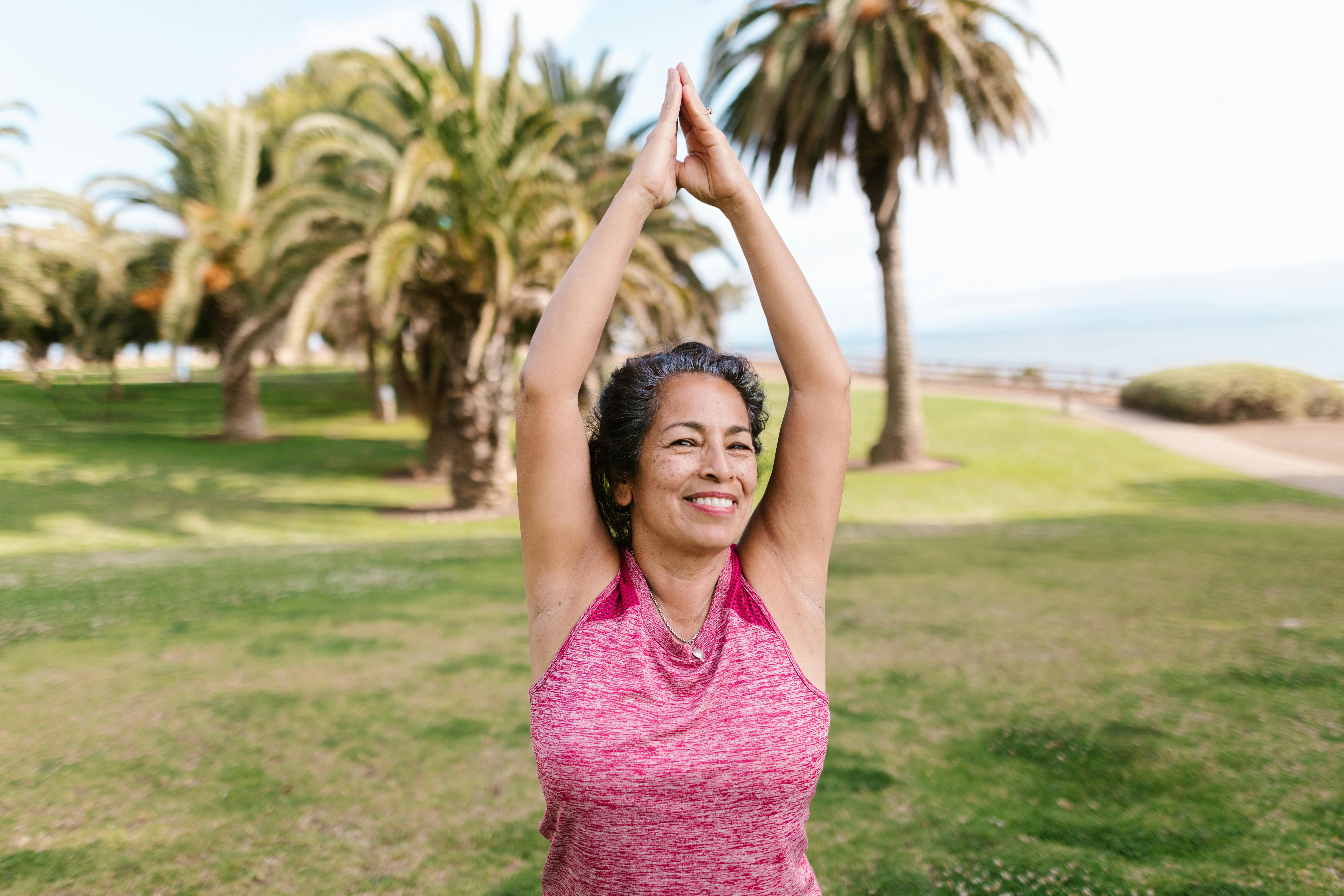
The Clock Reach is a dynamic standing exercise that improves your ability to lean and reach without losing balance, mimicking real-life tasks like grabbing an item from a high shelf. Stand on one leg (using a chair for light support initially). Imagine a clock face around you. Slowly reach out with the opposite hand toward various "times" on the clock (12, 3, 6, 9), tapping the spot before returning your hand to center. Keep your standing knee slightly soft. This trains the proprioceptors in your standing leg and foot, teaching your core and hips to stabilize while your body shifts weight, improving reaction time to potential trips.
Exercise #18 - Weighted Carry Walk (Load Challenge)
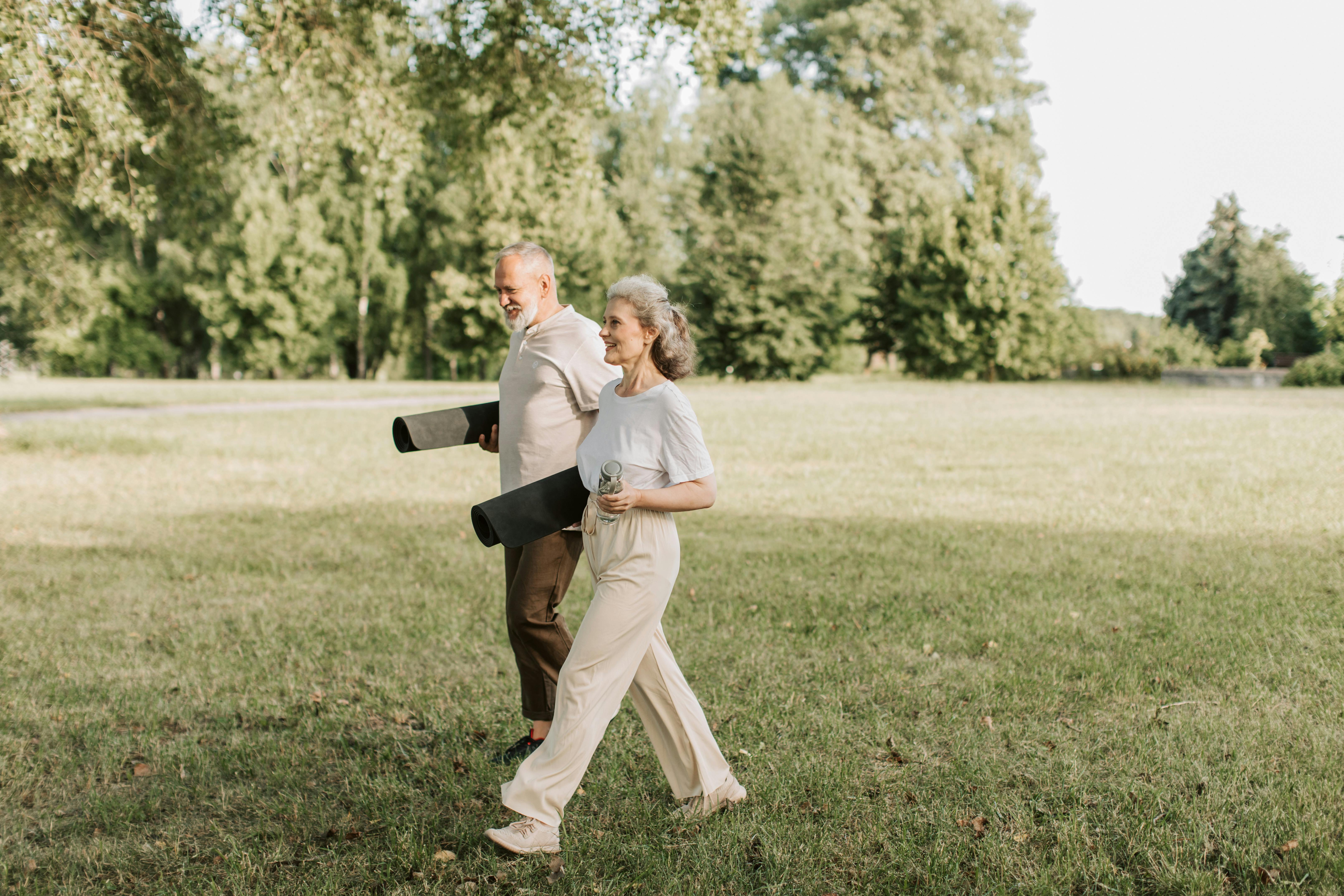
Adding a load challenge prepares your body for real-world scenarios like carrying groceries or a laundry basket. Hold a moderately light weight (like a soup can or a half-gallon jug of water) in one hand. Walk slowly and deliberately, focusing on keeping your head and torso upright and still. The uneven weight forces your core muscles and the opposite hip to work harder to maintain your posture and center of gravity. After one length, switch the weight to the other hand. This exercise builds functional stability and strength needed to maintain balance when your center of mass is shifted by an external load.
Exercise #19 - Foam Pad or Pillow Stand (Sensory Integration)
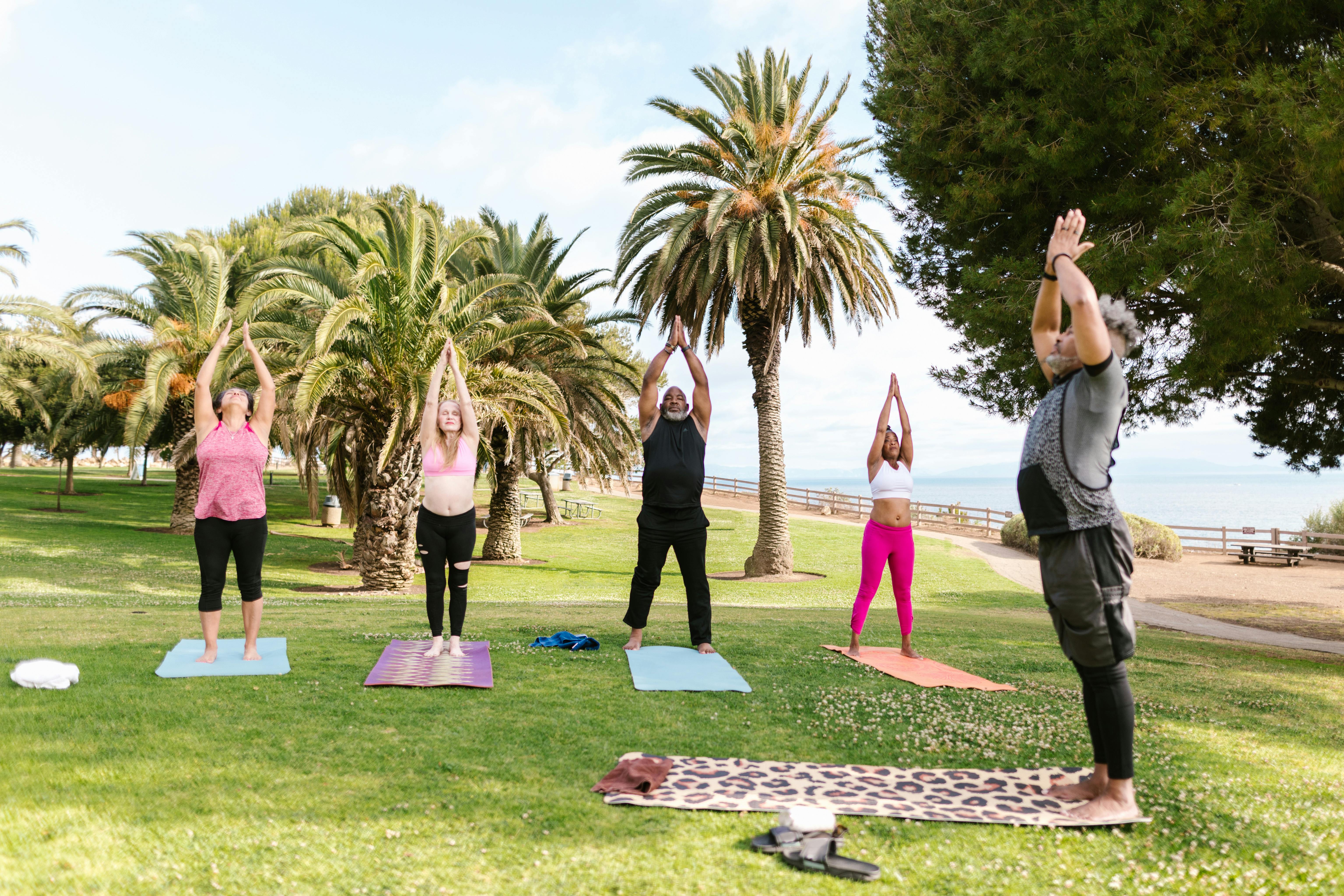
This addition challenges your balance by removing stable ground feedback, forcing your body to rely more heavily on your core, inner ear, and vision. Stand near a stable object (like a counter) and place a folded towel, firm pillow, or foam pad on the floor. Step onto the soft surface and practice standing on two feet first, then advance to the single-leg stand (Exercise #8). The instability forces your small foot and ankle muscles to work overtime, improving sensory awareness and refining the subtle, constant micro-adjustments required to prevent a fall on uneven or soft terrain (like carpet or grass).
Exercise #20 - Cognitive-Dual Tasking Walk
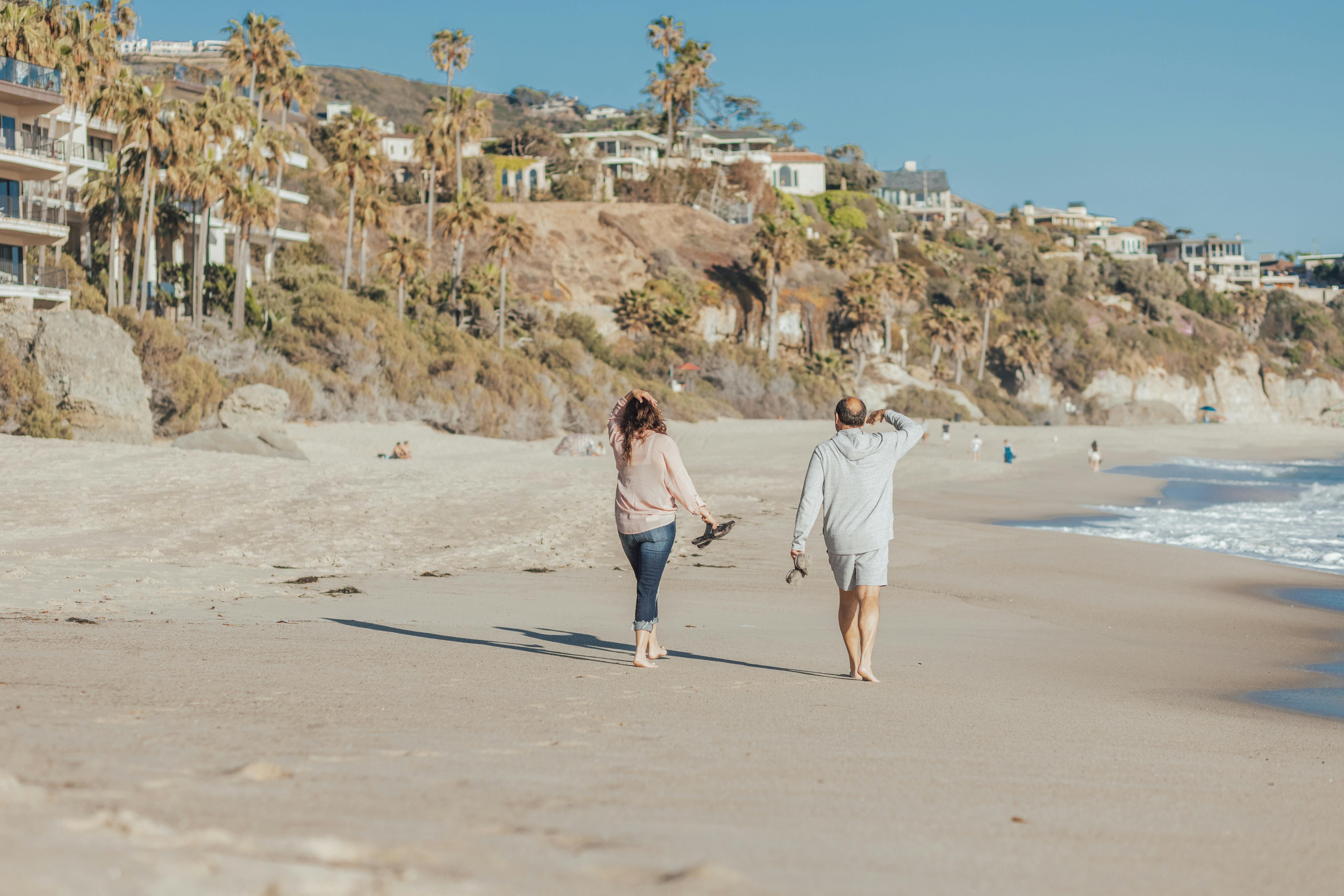
Falls often occur when attention is divided. This exercise trains your brain and body to handle simultaneous demands. Perform a heel-to-toe walk or a single-leg stand while simultaneously performing a simple cognitive task. Try reciting the alphabet backward, counting by threes, or naming a vegetable for every letter of the alphabet. The dual tasking challenges your executive function and ability to allocate attention, which is critical for balance protection during distractions like talking, rummaging through a bag, or reaching for a phone while walking. This improves reaction time when a fall threat occurs during divided attention.
Exercise #21 - The Figure-Eight Ankle Sway (Dynamic Foot Control)
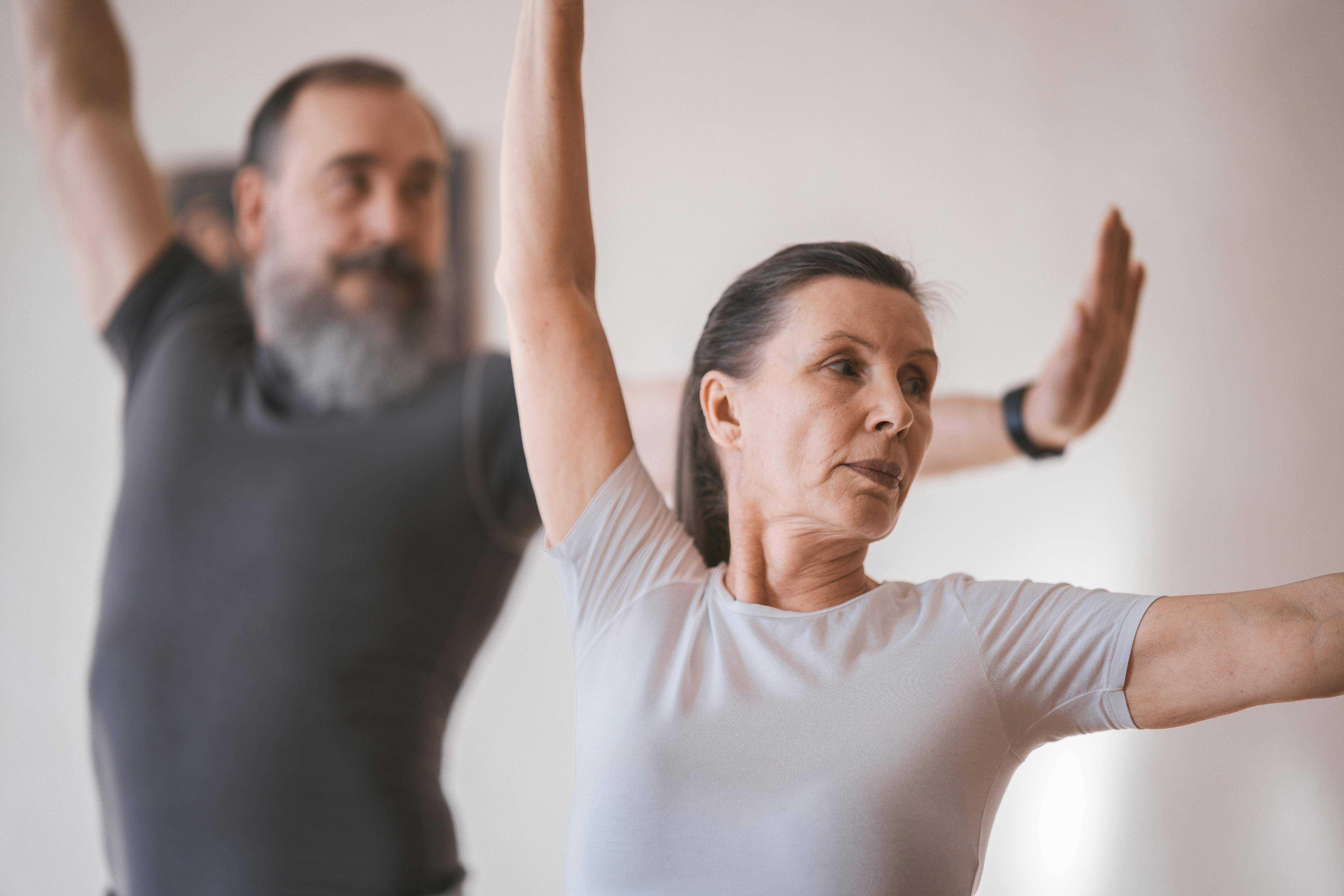
This exercise targets the ankle stabilizers and improves your body's ability to correct a sudden sway, which is essential when stepping onto uneven ground. Stand tall, holding onto a support. Keeping your feet hip-width apart, gently shift your weight in a slow, continuous figure-eight pattern, allowing your ankles and knees to move slightly. The key is to feel the weight distribution change across the soles of your feet without lifting them. Perform for 30 seconds in one direction, then reverse. This improves the subtle, intrinsic muscle control that prevents most minor trips from becoming falls.
Exercise #22 - Stop and Go March (Reaction Time and Gait Initiation)
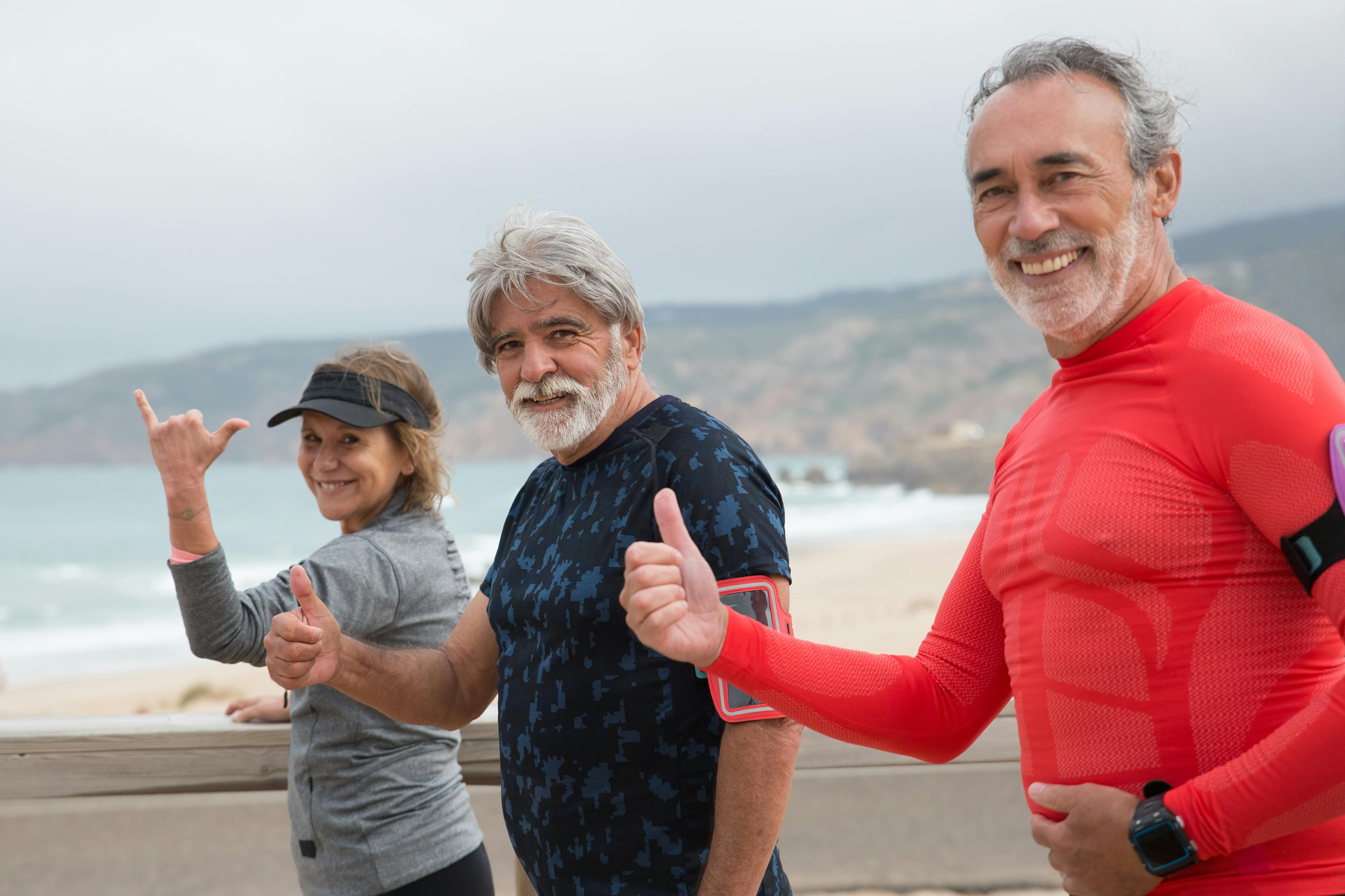
Training your body to quickly start and stop movement improves the reaction time needed to catch yourself. Stand with feet hip-width apart. Begin marching in place, lifting your knees high. On a random cue (from a partner, or a tap on a support), immediately stop and hold the last position for three seconds, balancing on one leg. Then, immediately start marching again. This exercise trains your gait initiation (the transition from standing to walking) and strengthens the immediate neurological "braking" response required when encountering an unexpected obstacle or curb.
Exercise #23 - High Knee March with Eye Closure (Vestibular Focus)
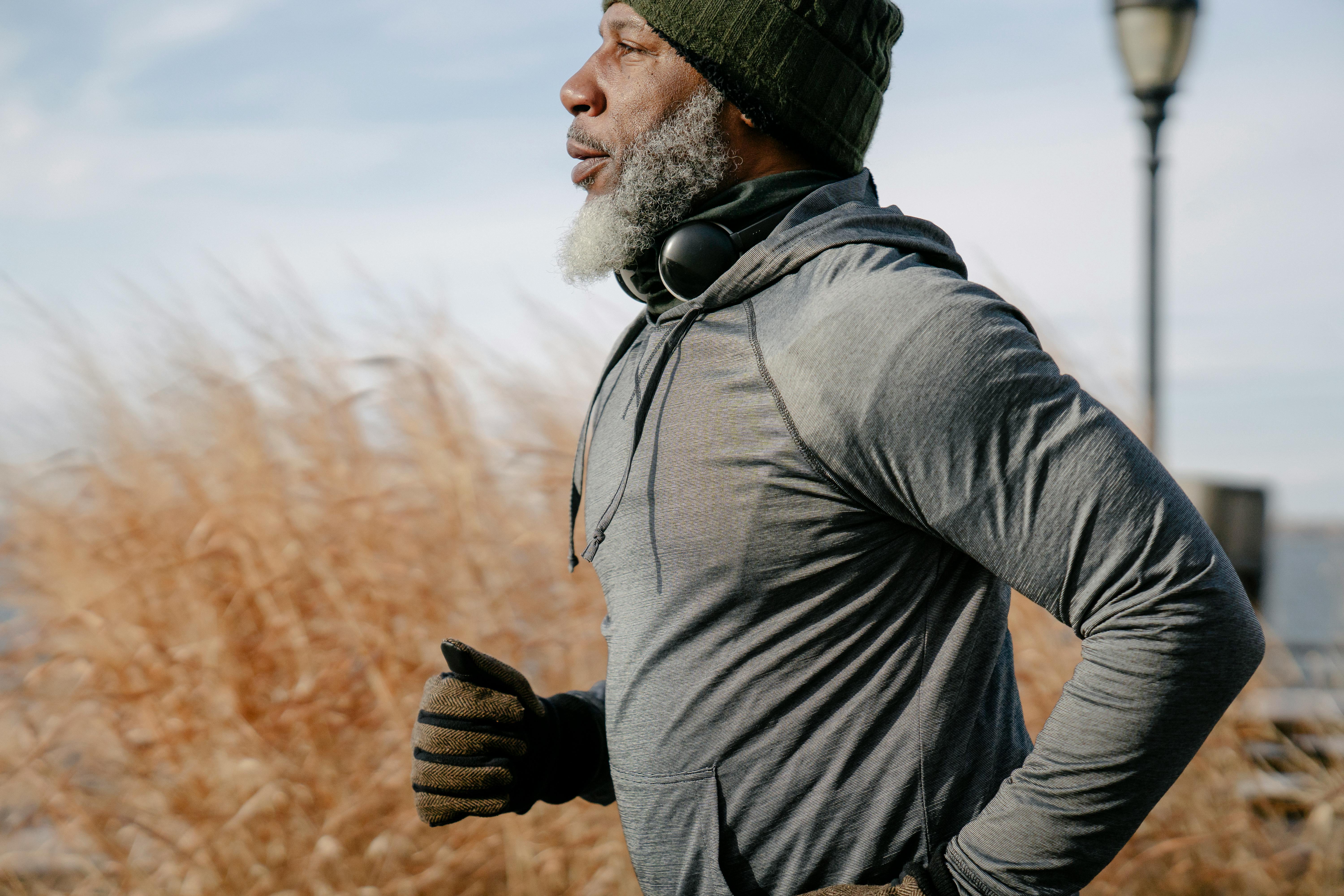
This advanced drill intentionally removes visual input to force your body to rely solely on the vestibular system (inner ear) and proprioception. Stand near a supportive wall or counter. Slowly march in place, lifting your knees high. Once stable, gently close your eyes and continue the march for 10 seconds. Open your eyes, stabilize, and repeat. This challenges your balance severely, but strengthens the inner ear's ability to sense orientation, which is crucial for maintaining stability in low light, darkness, or when your eyes are momentarily diverted.
Exercise #24 - Multi-Directional Toe Taps (Ankle and Hip Agility)
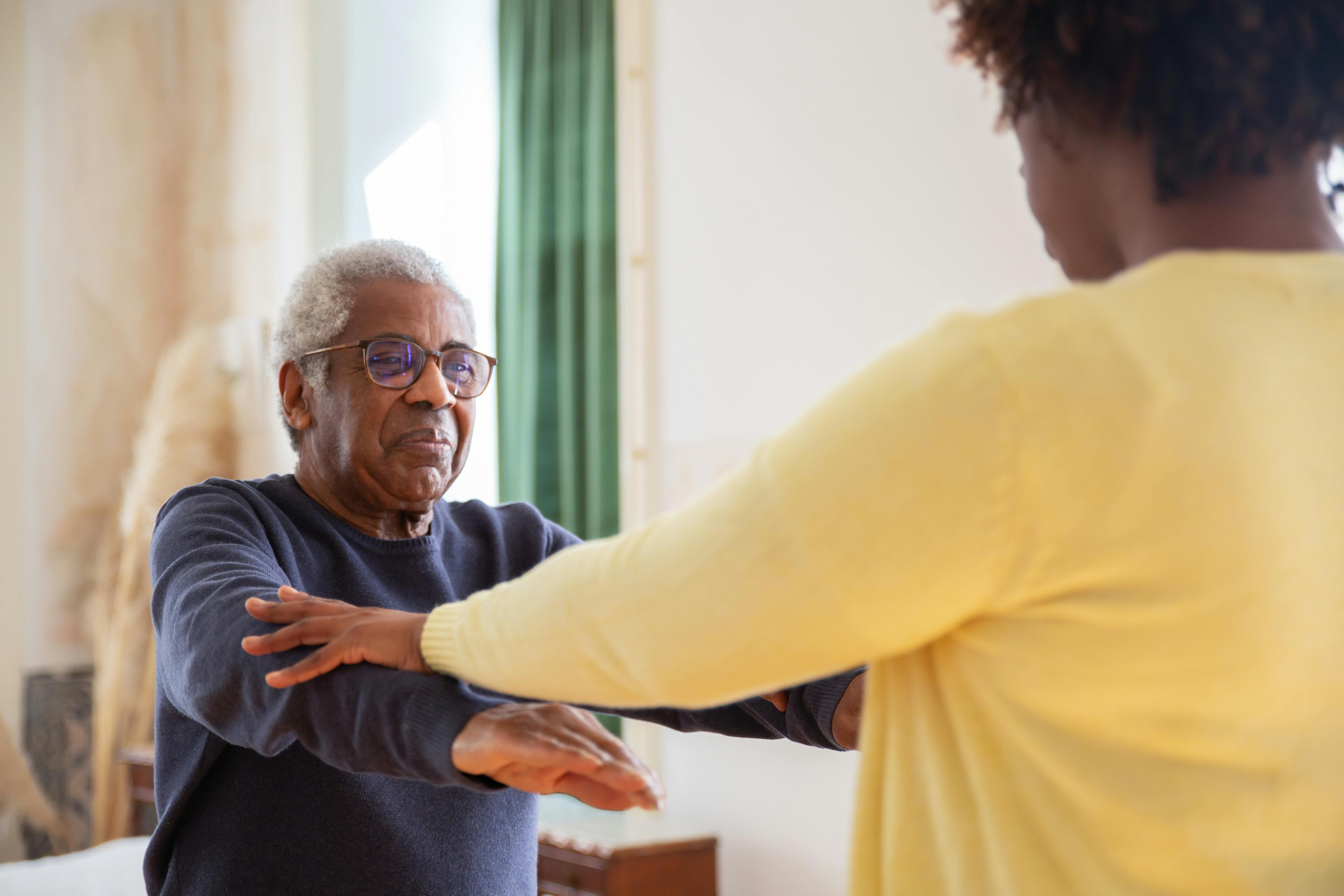
This movement improves the agility of your hip and ankle, preparing you for complex steps (e.g., stepping around a piece of furniture). Stand on one leg (supported). Use the toe of your lifted foot to tap the ground in a sequence: directly in front, directly to the side, and directly behind you. Repeat this sequence 10 times, then switch legs. The slow, controlled taps force the standing ankle to make rapid micro-corrections while the hip moves in multiple planes, improving the stability needed for quick changes in direction.
Exercise #25 - Seated Foot Scoops (Intrinsic Foot Muscle Activation)

Balance relies heavily on the "gripping" power of your toes and arches. Sit in a sturdy chair with your feet flat on a smooth towel placed on the floor. Keeping your heel planted, slowly curl your toes and arch your foot to "scoop" the towel toward your heel. Release and repeat. Perform 10 repetitions per foot. This subtle exercise strengthens the intrinsic muscles of the foot and improves the neurological connection between your foot and your brain, enhancing your sense of grounding and stability during standing and walking.
Exercise #26 - Side Stepping with Resistance Band (Lateral Hip Power)
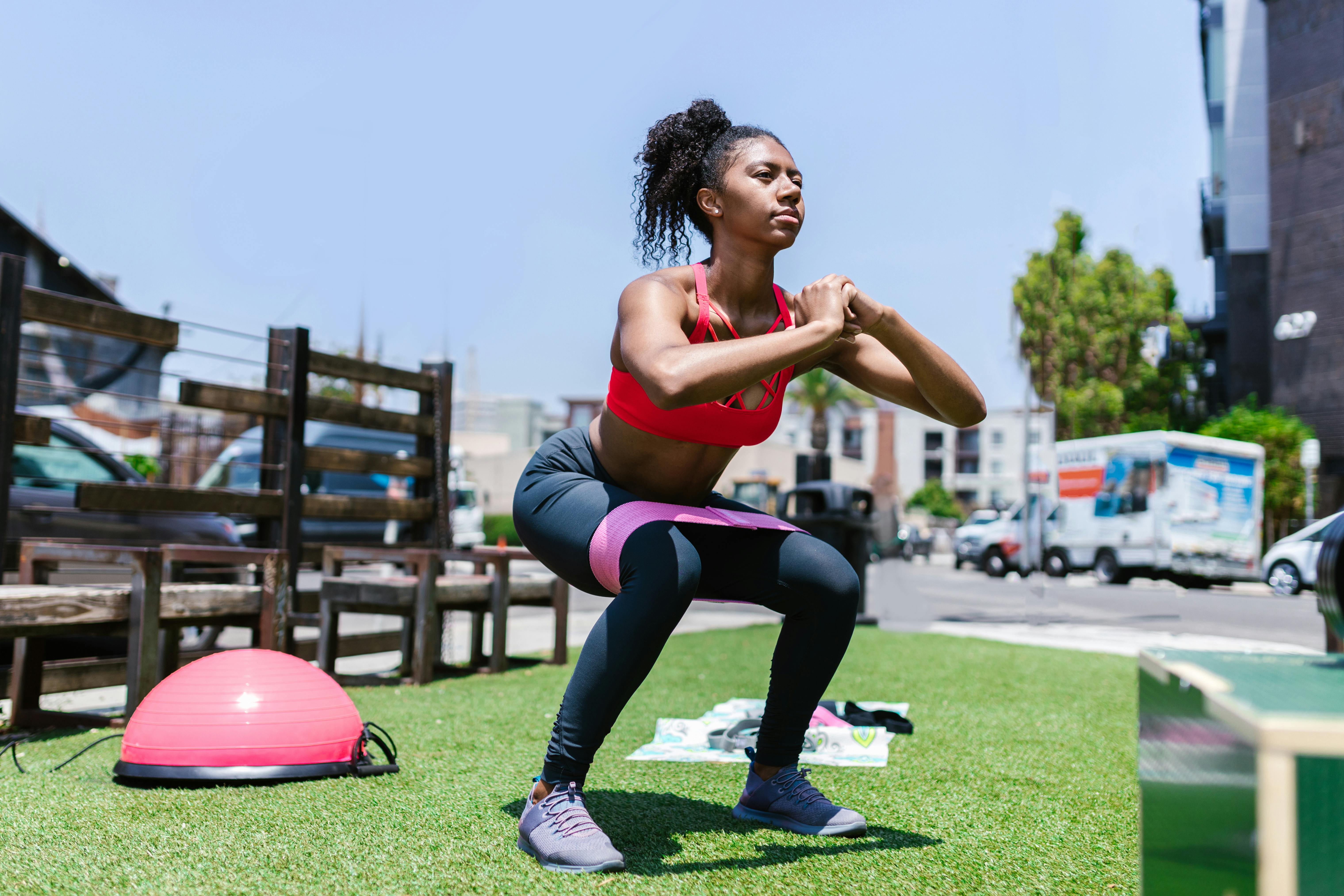
Most falls happen when the body moves sideways or twists, relying heavily on the outer hip muscles (abductors). This exercise directly strengthens that lateral power. Place a small, light resistance band around your ankles or just above your knees. Stand tall, feet shoulder-width apart. Take 10 slow, deliberate steps to one side, keeping tension on the band, then 10 steps back. Keep your feet pointing straight ahead and maintain a slight bend in your knees. This action strengthens the gluteus medius and surrounding hip stabilizers, providing the essential lateral strength needed to prevent the hip from collapsing during side-to-side movements or when quickly shifting weight.
Exercise #27 - Single-Leg Stand with Head Tilts (Vestibular Challenge)
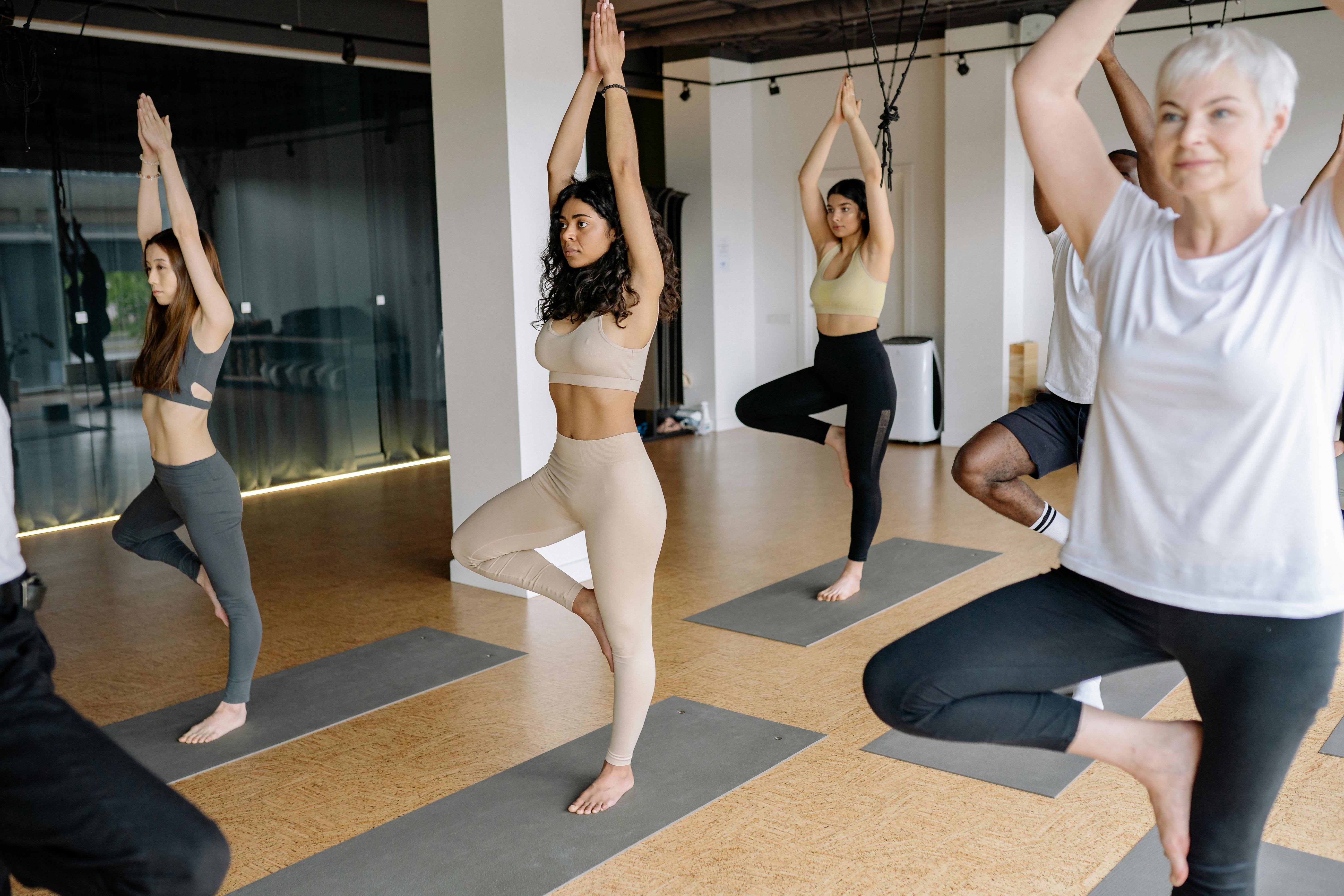
This is an advanced variation of the static single-leg stand that specifically challenges your vestibular system (inner ear) and its connection to the brain—the primary control center for balance. Stand on one leg next to a sturdy chair or counter for support. Once stable, slowly tilt your head from side to side (ear toward shoulder), then slowly nod your head up and down. Perform 10 tilts and 10 nods before switching legs. Moving your head while balancing severely disrupts the inner ear’s stability input, forcing the deep core and neck muscles to work harder to maintain your visual horizon and center of gravity.
Exercise #28 - Ankle Alphabets (Proprioceptive Refinement)
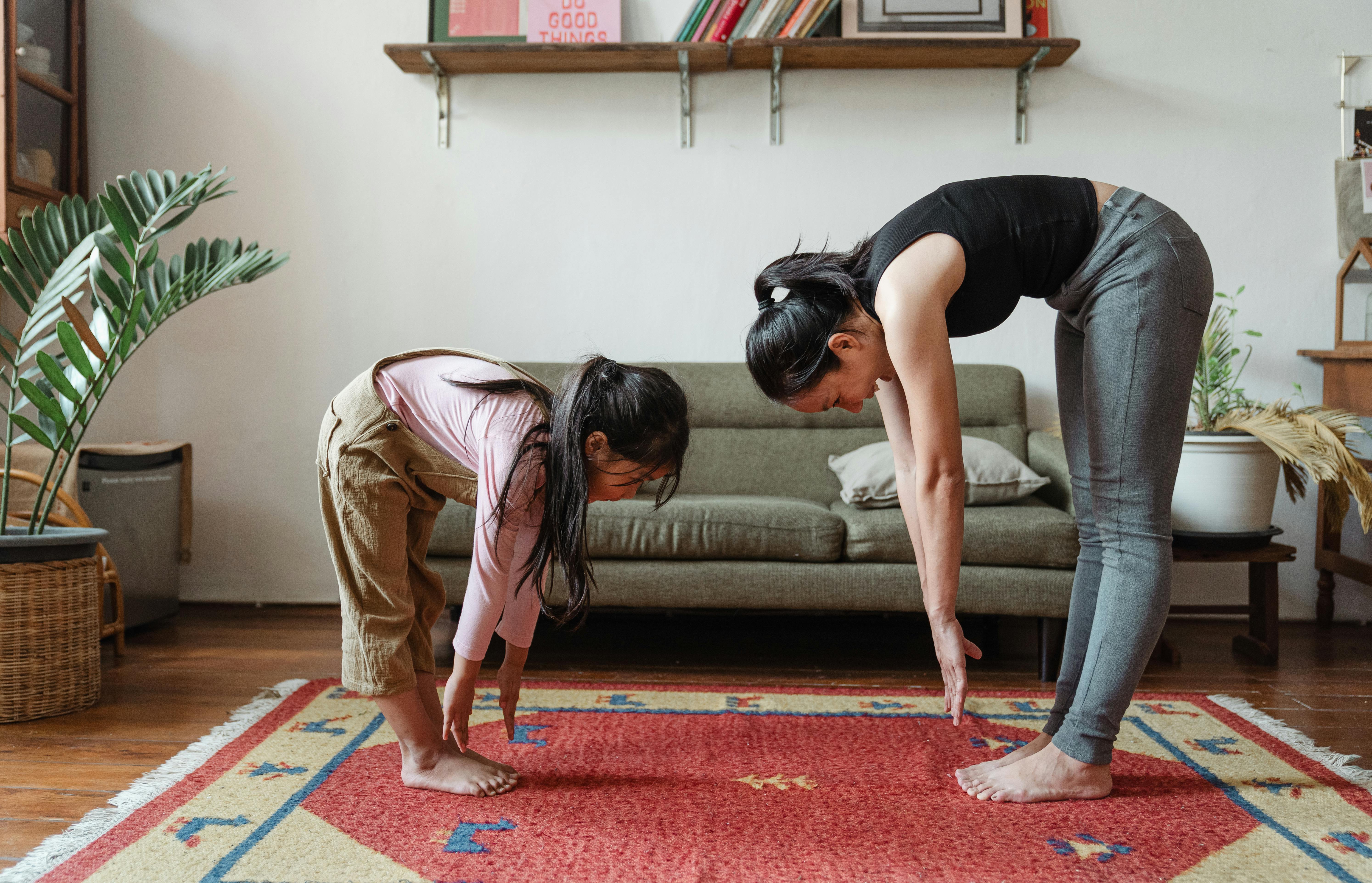
A strong ankle is crucial, but so is its ability to feel the ground and move precisely (proprioception). Sit in a sturdy chair with your back straight and one leg extended. Without moving your thigh, use your big toe as a pencil and slowly draw each letter of the alphabet in the air with your foot. Focus on drawing large, complete letters. This action requires subtle control from all the small intrinsic foot and ankle muscles, improving their strength, flexibility, and nerve-to-brain awareness. Better proprioception allows your body to sense a tilt or stumble faster, improving reaction time before a fall occurs.
Exercise #29 - Feather Taps (Weight Transfer Awareness)
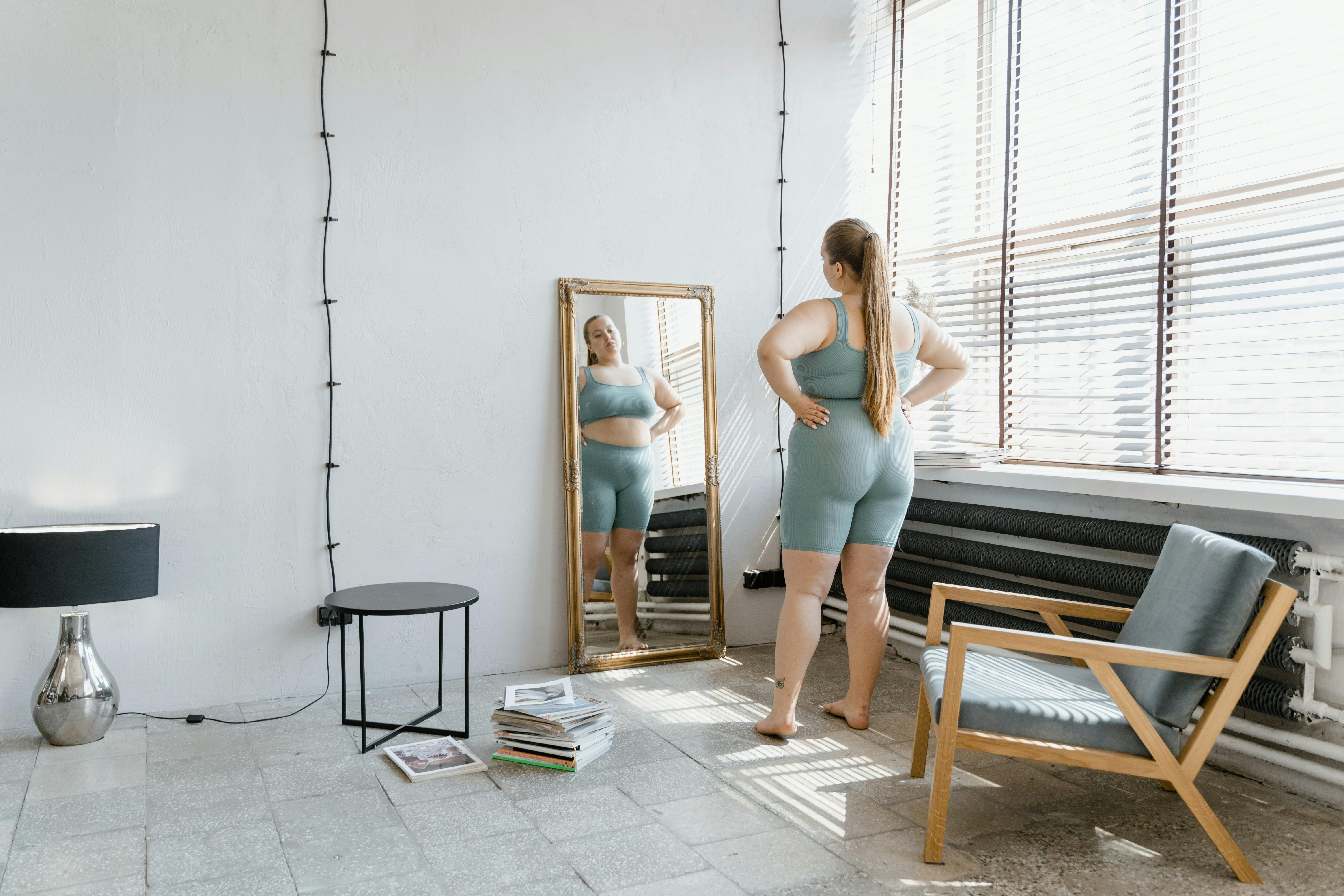
This simple exercise dramatically improves your dynamic weight transfer and awareness of where your center of gravity lies, which is essential for gait correction. Stand on two feet near a chair. Lift one foot just high enough to clear the ground. Slowly lower it until the heel barely taps the floor, then lift it again immediately. Repeat this "feather tap" 10 times, focusing on keeping your supporting leg stable and feeling the precise weight shift. The lightness of the tap prevents you from fully committing your weight, forcing your brain to activate muscles instantly to prevent a fall if the ground were suddenly unstable.
Exercise #30 - Heel-Toe Weight Shifts (Anterior/Posterior Stability)
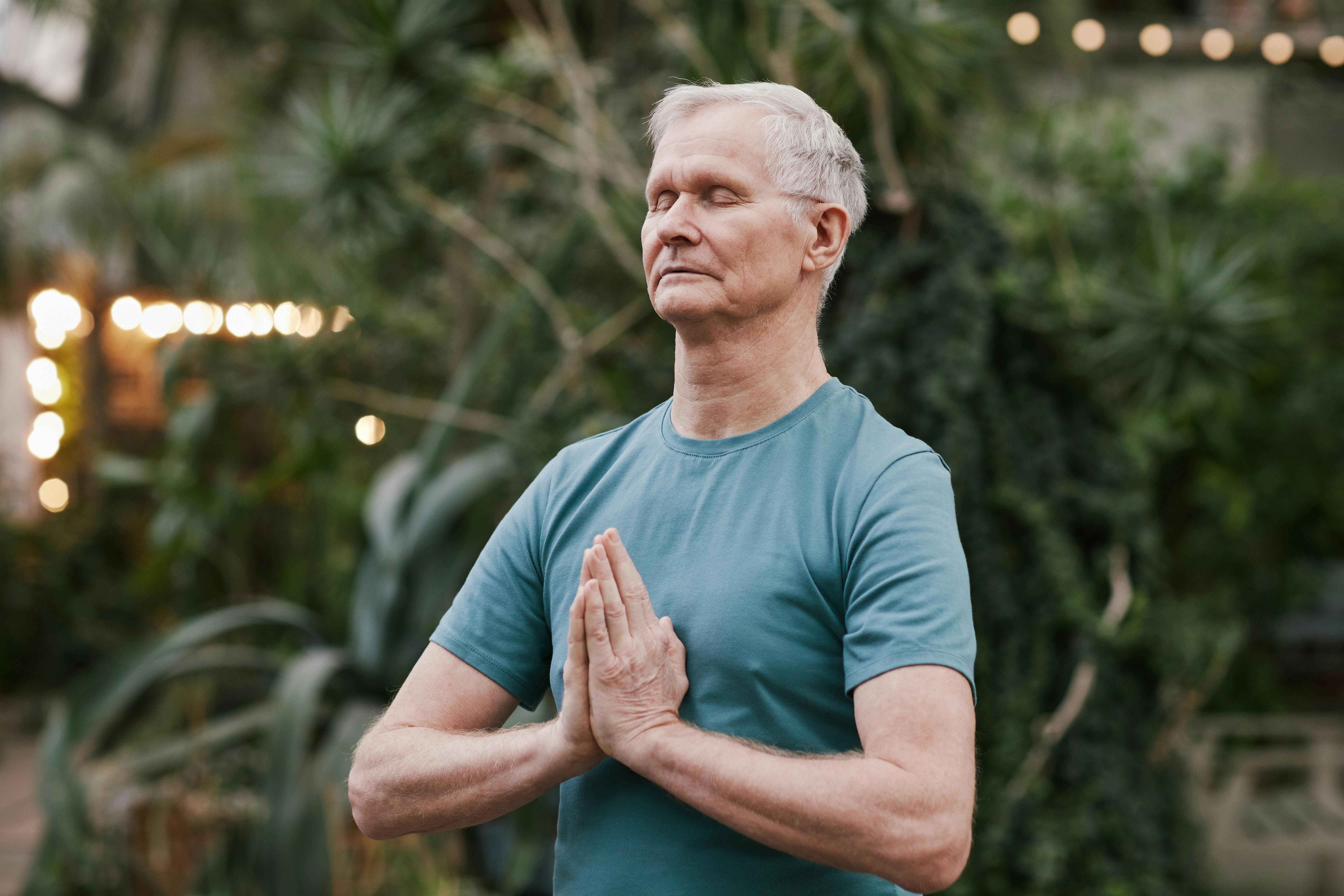
Falls often happen when leaning too far forward or backward. This exercise trains the muscles responsible for anterior (front) and posterior (back) stability. Stand with feet hip-width apart. Slowly and controlledly shift your weight forward onto your toes (lifting your heels slightly), then gently shift your weight backward onto your heels (lifting your toes slightly). Do this rocking motion 15 times, increasing the distance you rock each time, but never so far that you lose balance and need to step out. This strengthens the opposing muscles in the shins and calves, enhancing your ability to control large, necessary balance corrections.
Exercise #31 - The Figure-Eight Walking Pattern (Dynamic Spatial Awareness)
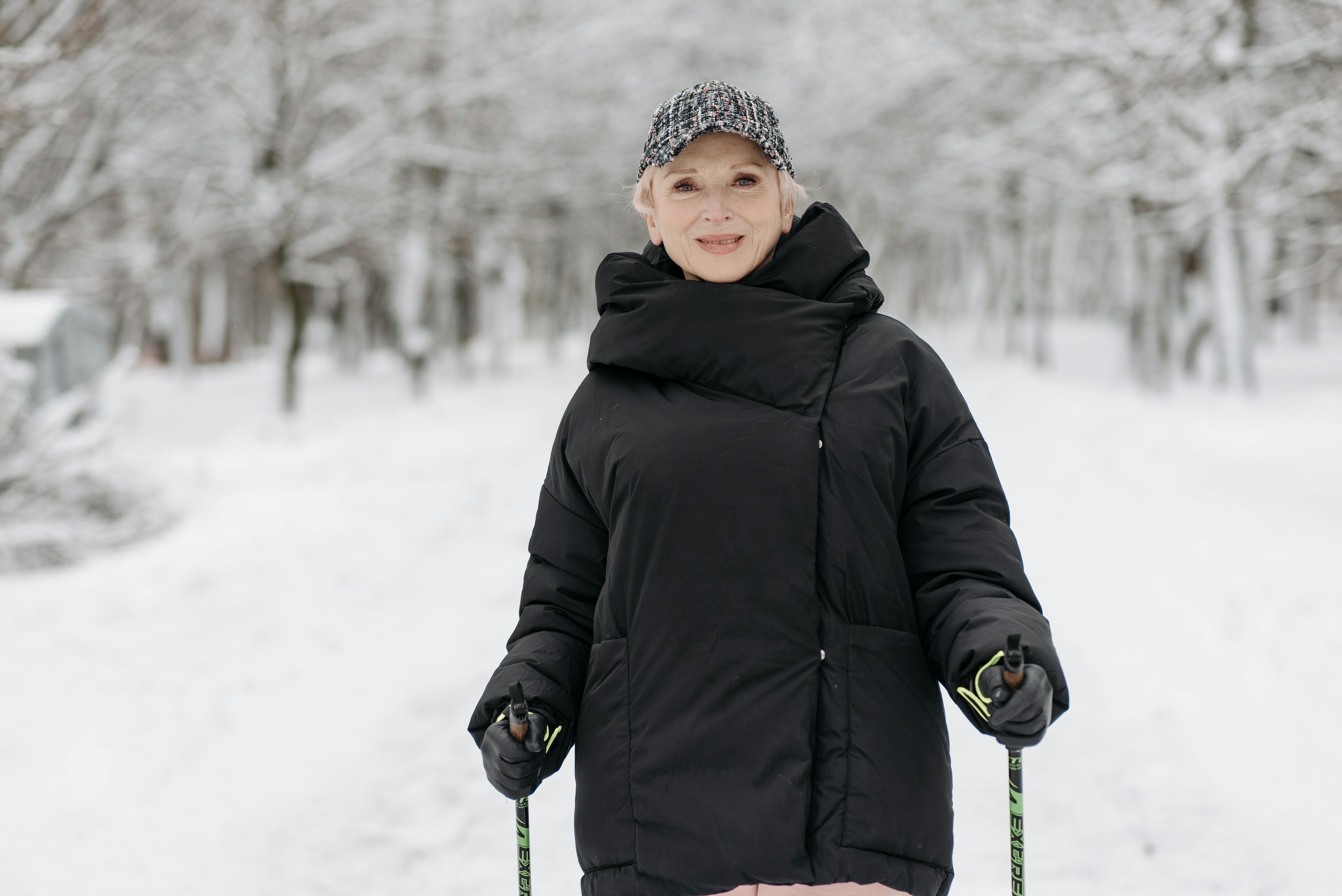
This exercise elevates basic walking by introducing continuous, deliberate changes in direction, which significantly improves dynamic stability and spatial awareness—critical skills for navigating crowded or busy environments. Instead of walking in a straight line, mark two points (e.g., small cones, socks, or water bottles) approximately 6 to 8 feet apart. Practice walking slowly and continuously around the two points in a figure-eight pattern. This movement requires constant adjustment of speed, turning radius, and hip rotation. Focus on keeping your gaze slightly ahead rather than looking down at your feet. This trains your body to manage rotational forces and maintain balance during rapid transitions, preparing you for unexpected pivots needed in daily life.
Exercise #32 - The Tandem Stance with Foam Wedge (Proprioceptive Confusion)
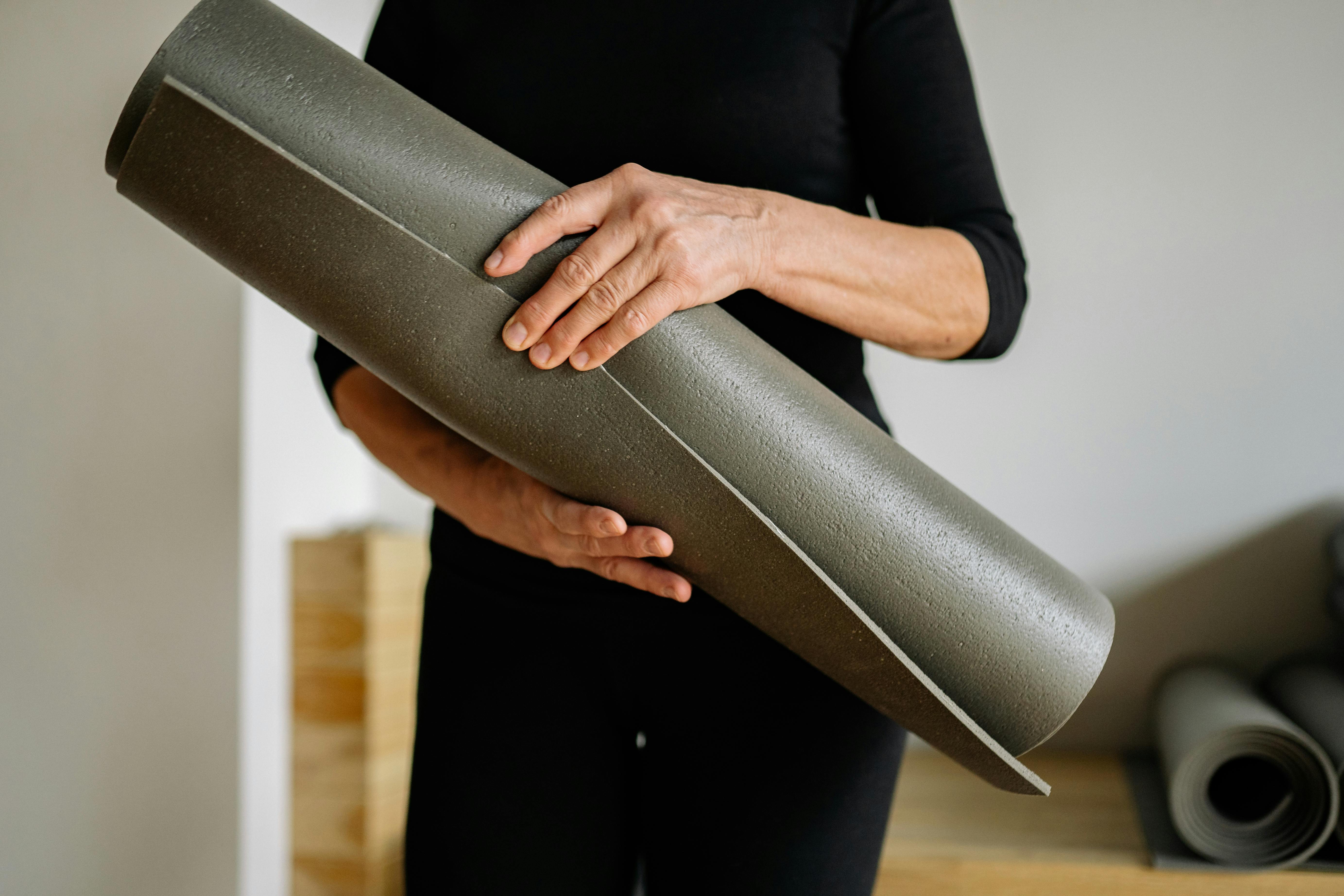
This advanced exercise intentionally introduces proprioceptive confusion to train your body’s deep balance mechanisms. Proprioception is your body's sense of self-movement and position. Stand near a wall or chair, placing a small, firm foam wedge or a heavily folded towel on the floor. Place one foot in front of the other (heel-to-toe or tandem stance) with the front foot entirely or partially on the wedge, creating a slight, unstable incline. Hold this position for 30 seconds, then switch feet. This forces your ankles, knees, and core to constantly make rapid, subtle micro-corrections against the tilt and instability, greatly improving the subconscious responsiveness needed to prevent a trip on uneven ground, ramps, or curbs.
33. Single-Arm Cross-Body Reach (Functional Core & Balance)
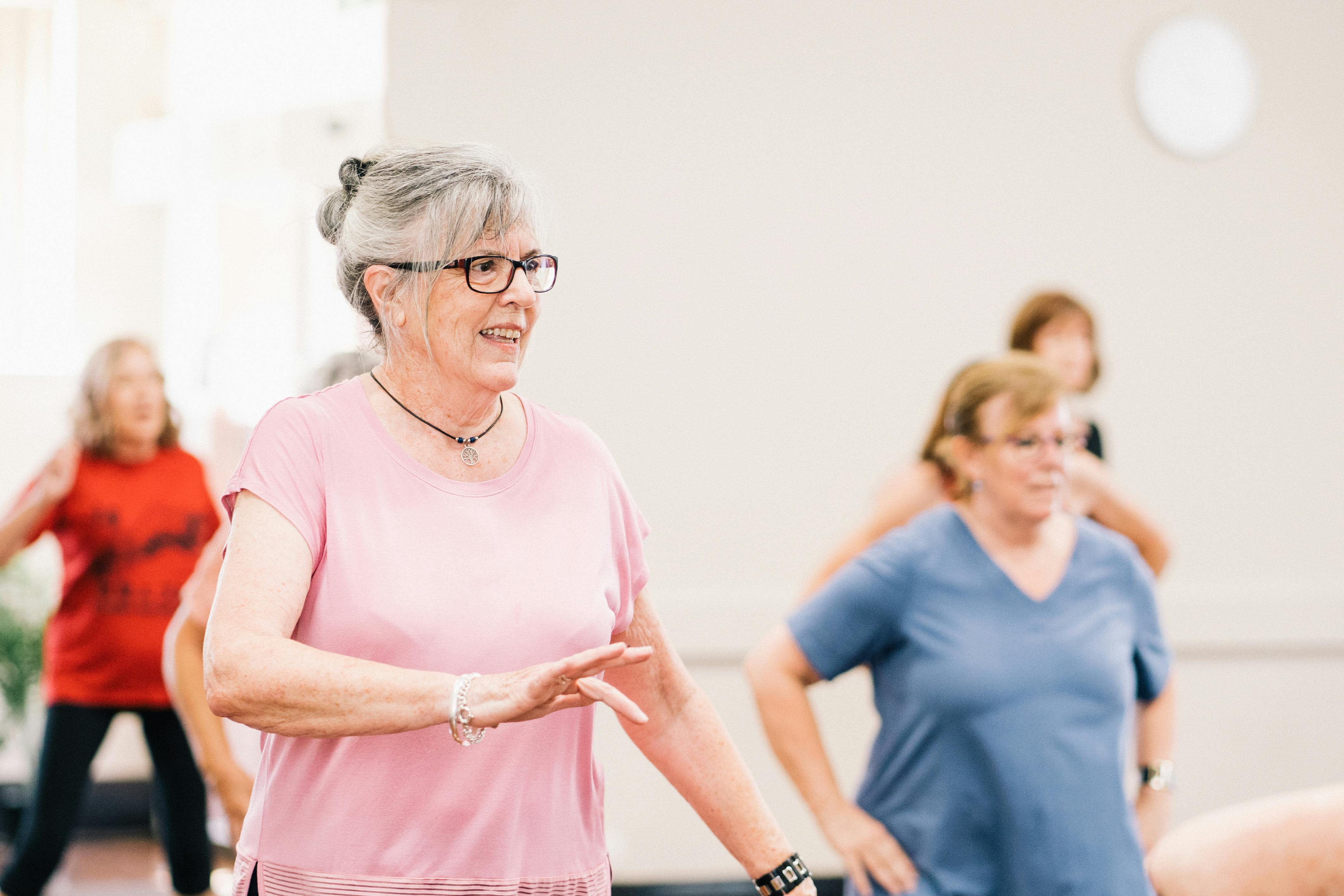
This movement trains the functional core rotation and single-leg stability needed for everyday activities like reaching into a high cabinet or twisting to grab a suitcase. Stand on one leg (near a support). Hold a light object (e.g., a soup can or water bottle) in the hand opposite the lifted leg. Slowly extend that arm across the front of your body and upward, reaching as far as possible toward the opposite corner of the room. Return slowly to the start. Perform 8-10 controlled repetitions, then switch legs and arms. This exercise forces your oblique core muscles and hip stabilizers to work simultaneously to prevent rotation and maintain upright balance while your center of gravity is constantly shifting.
The Importance of Consistency and Safety
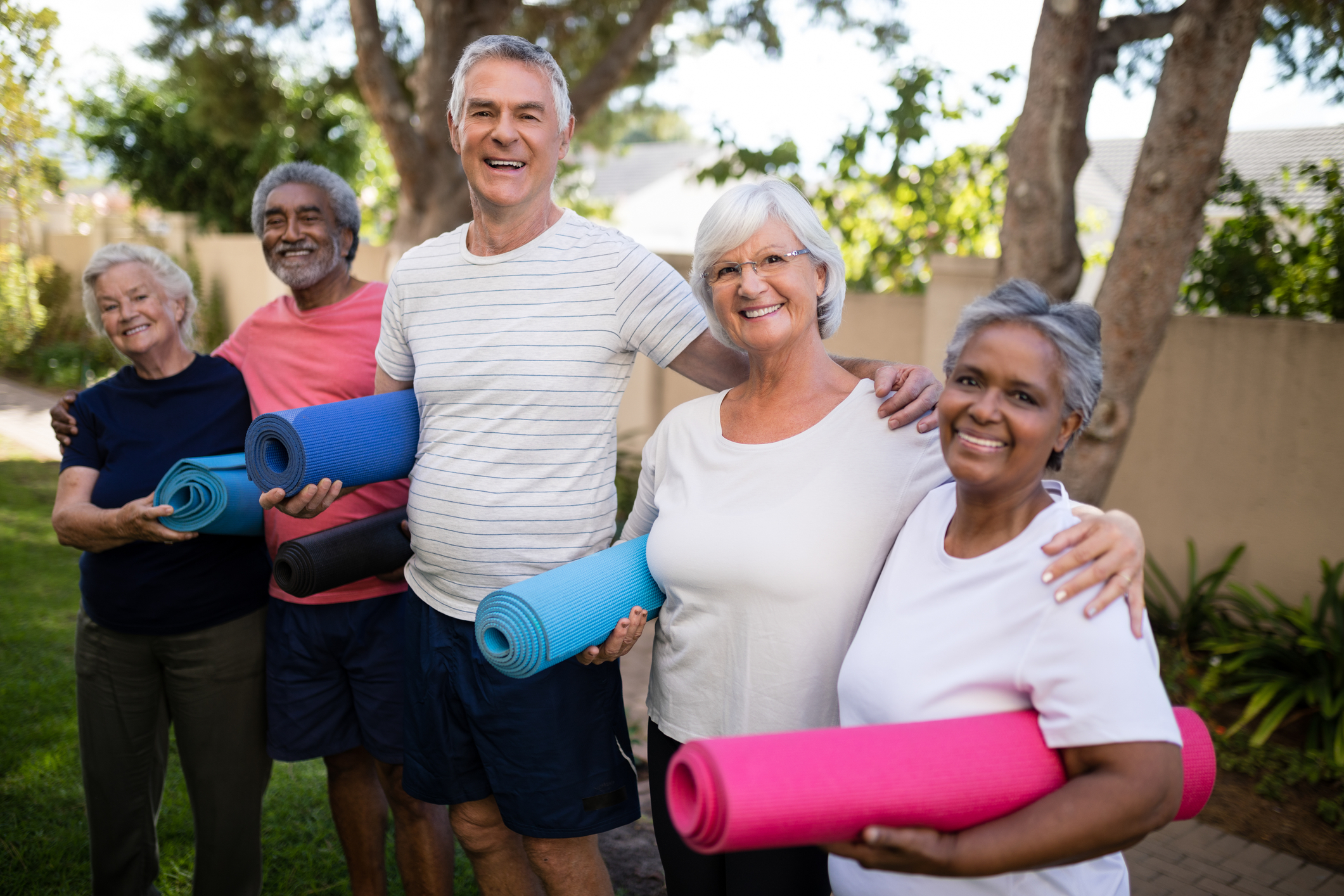
To reap the benefits of these exercises, consistency is key. Aim to incorporate these exercises into your routine at least three times a week. However, safety should always be the top priority. Always warm up before exercising, wear appropriate footwear, and don't push yourself beyond your comfort zone. If you're new to exercise or have a chronic health condition, consult with a healthcare professional before starting a new exercise regimen.
